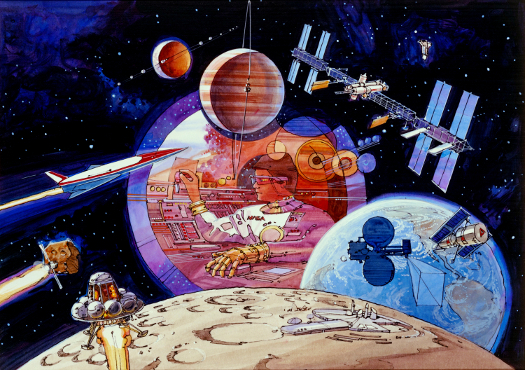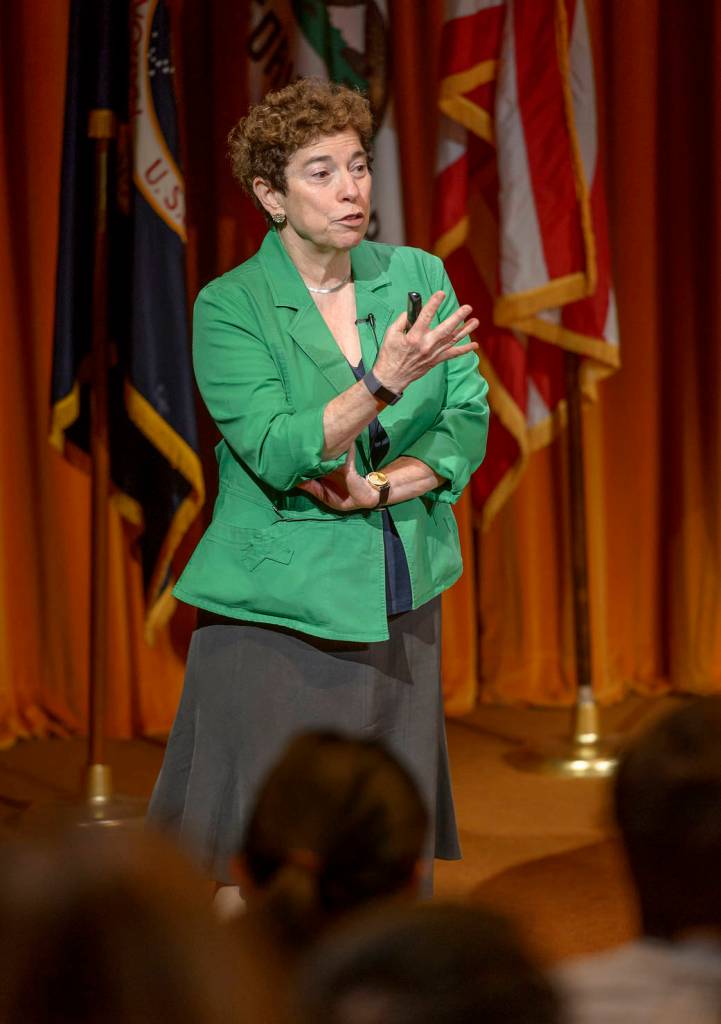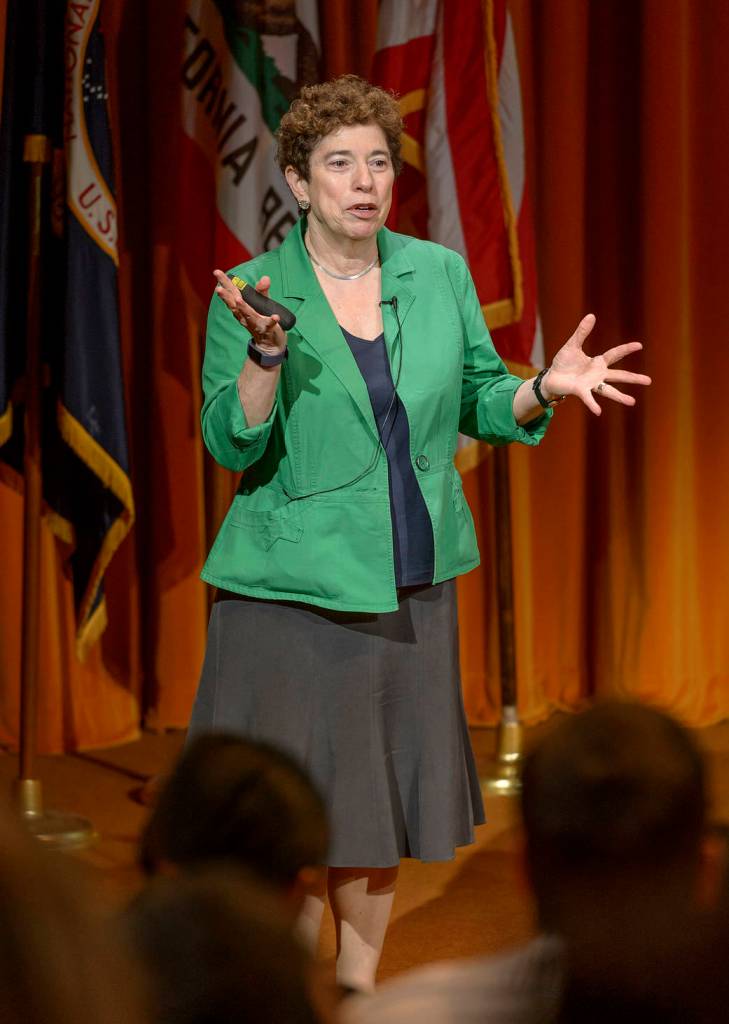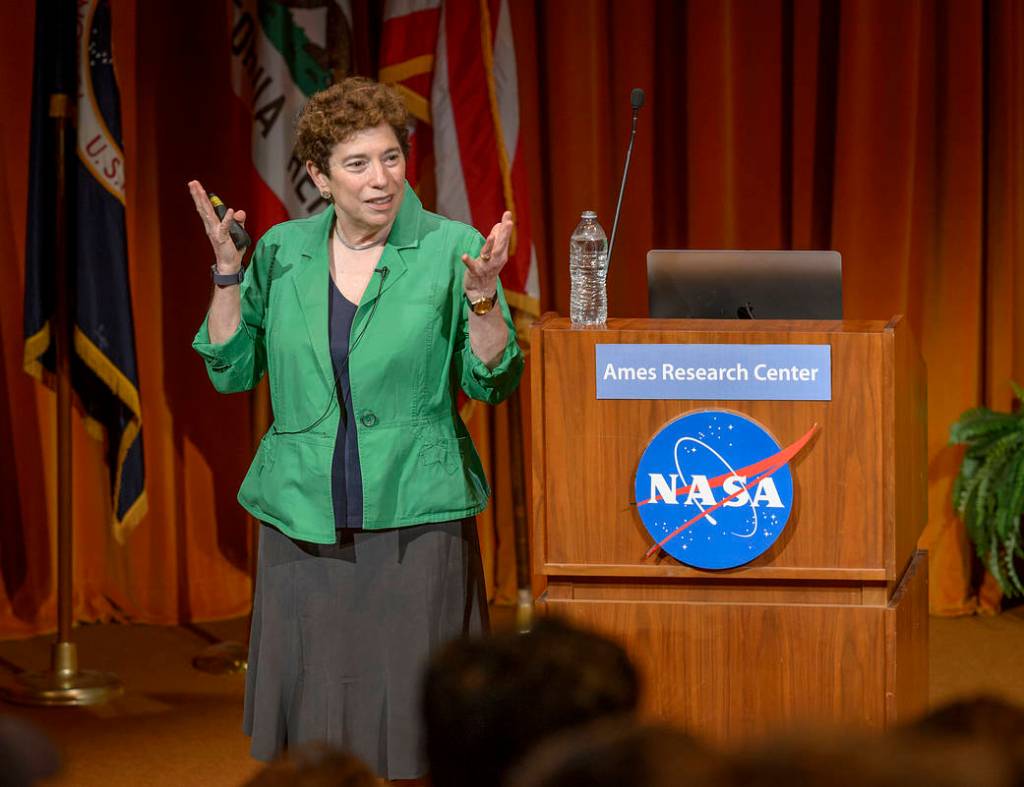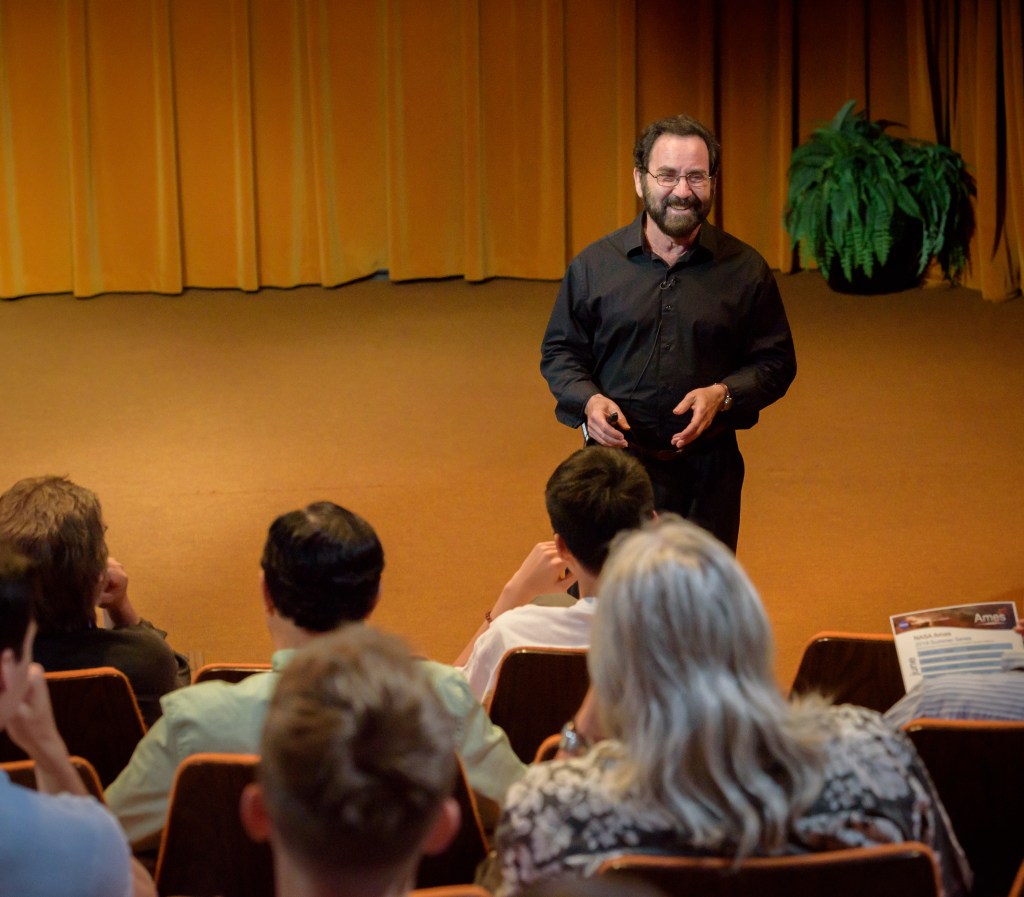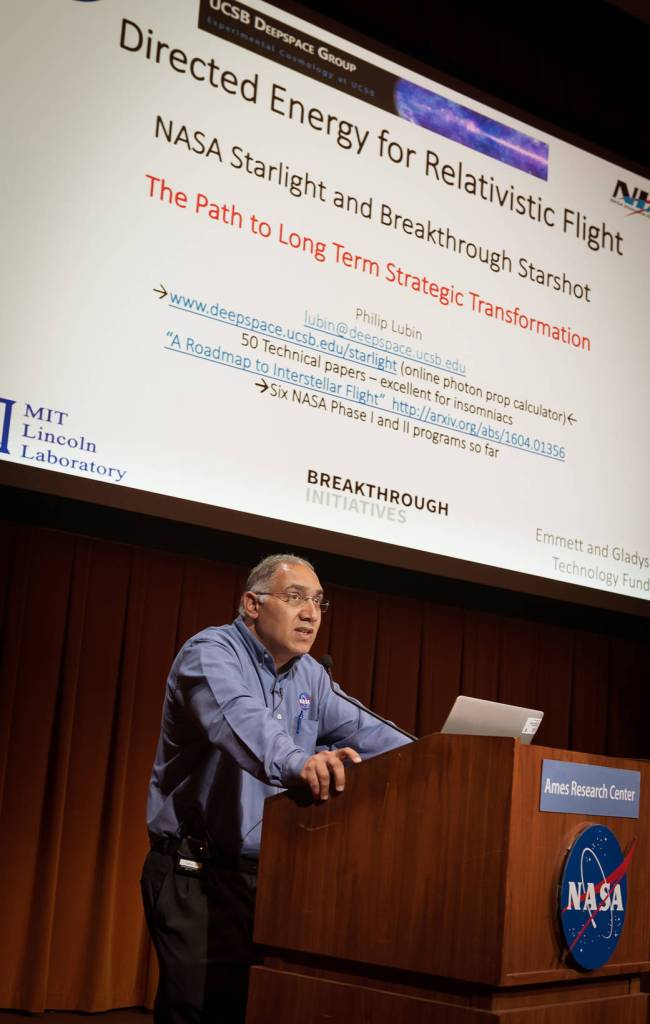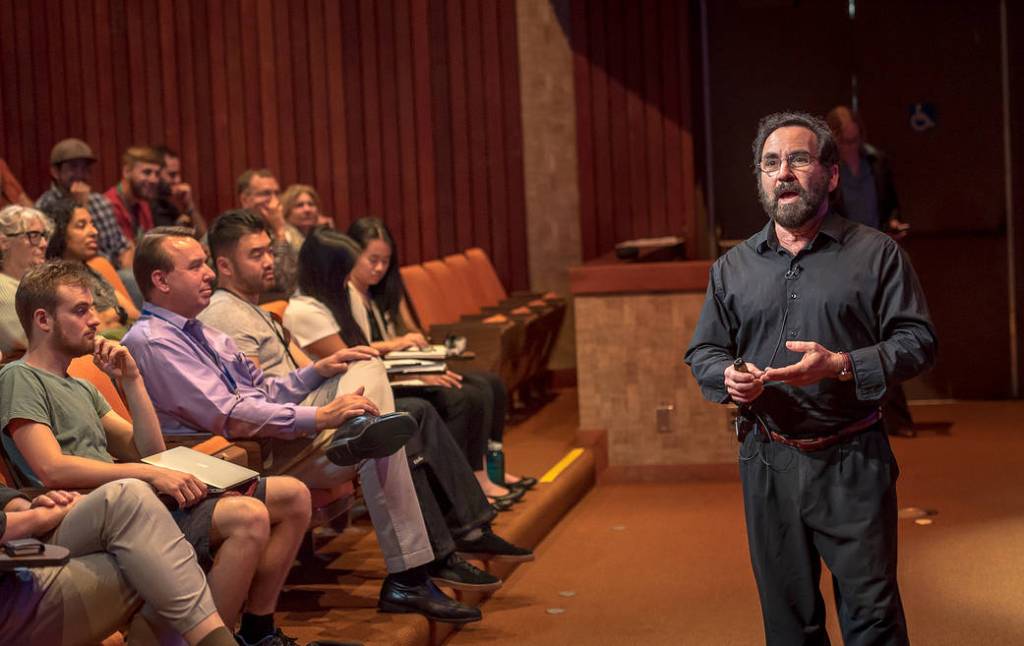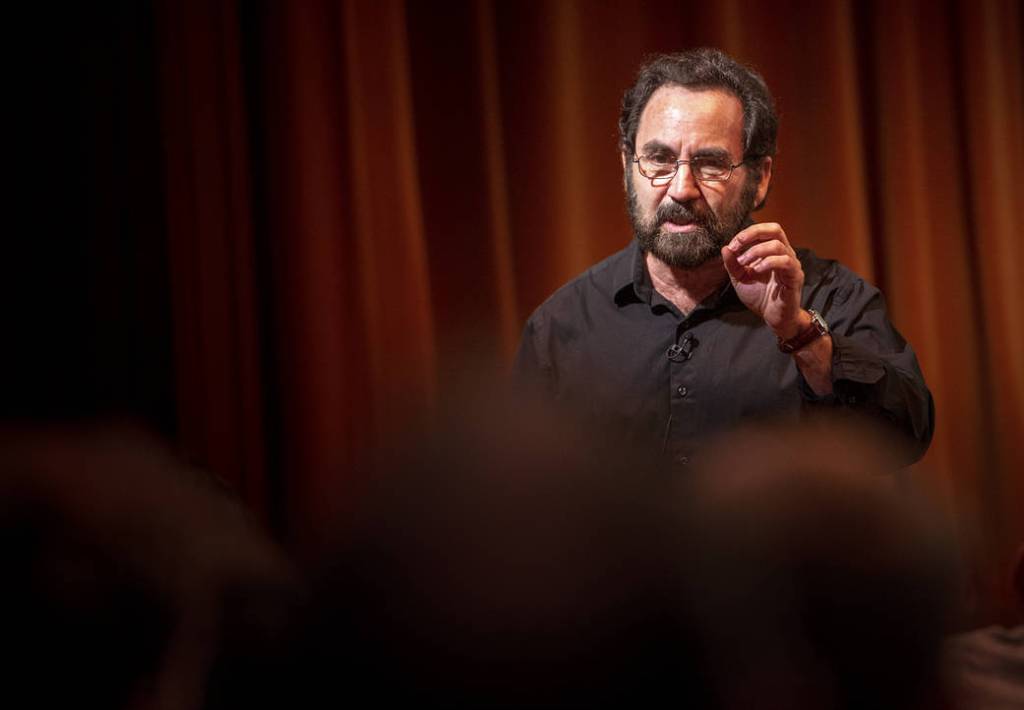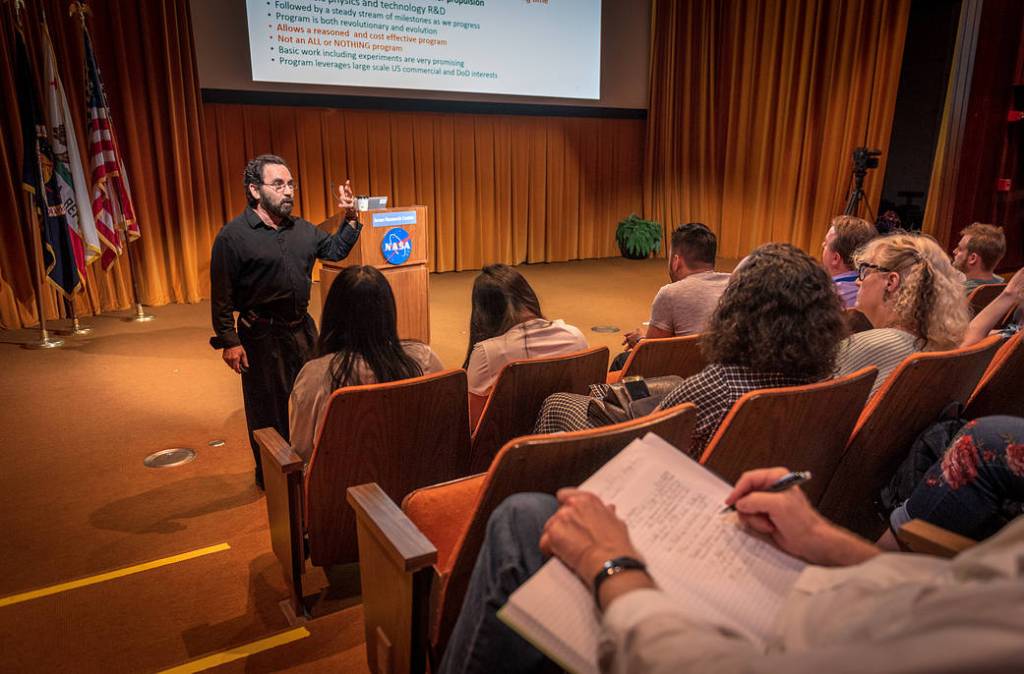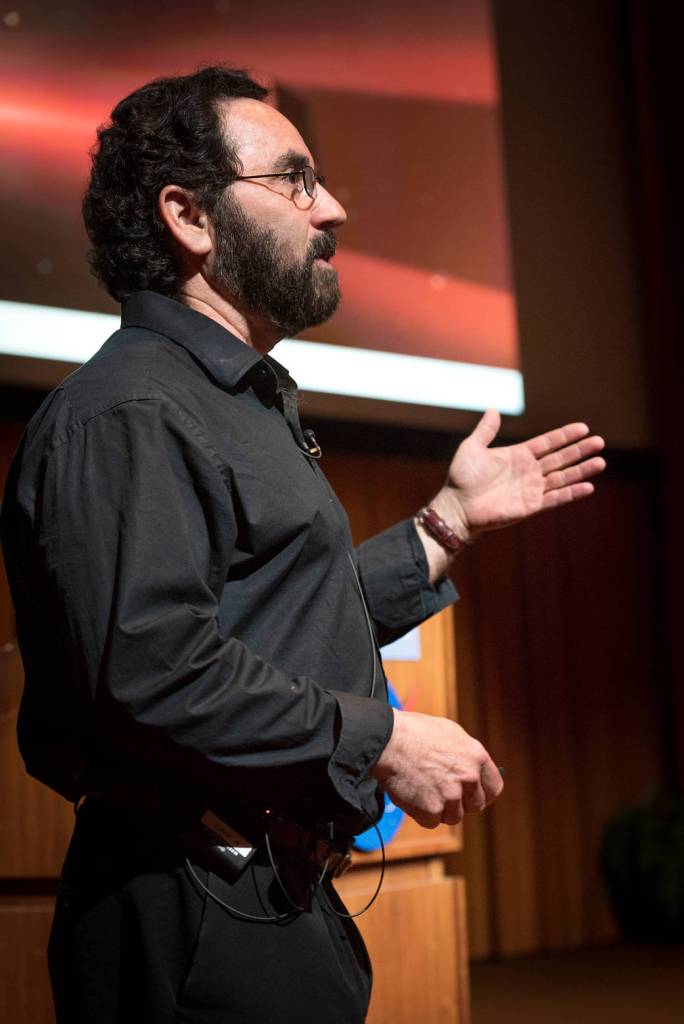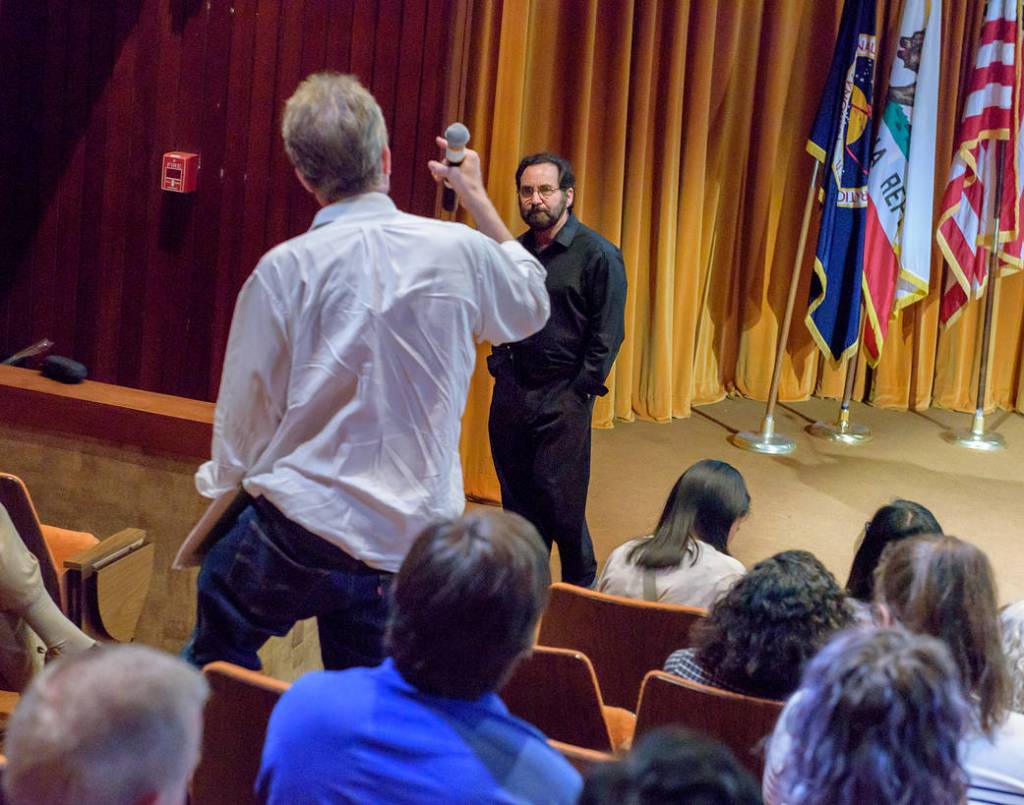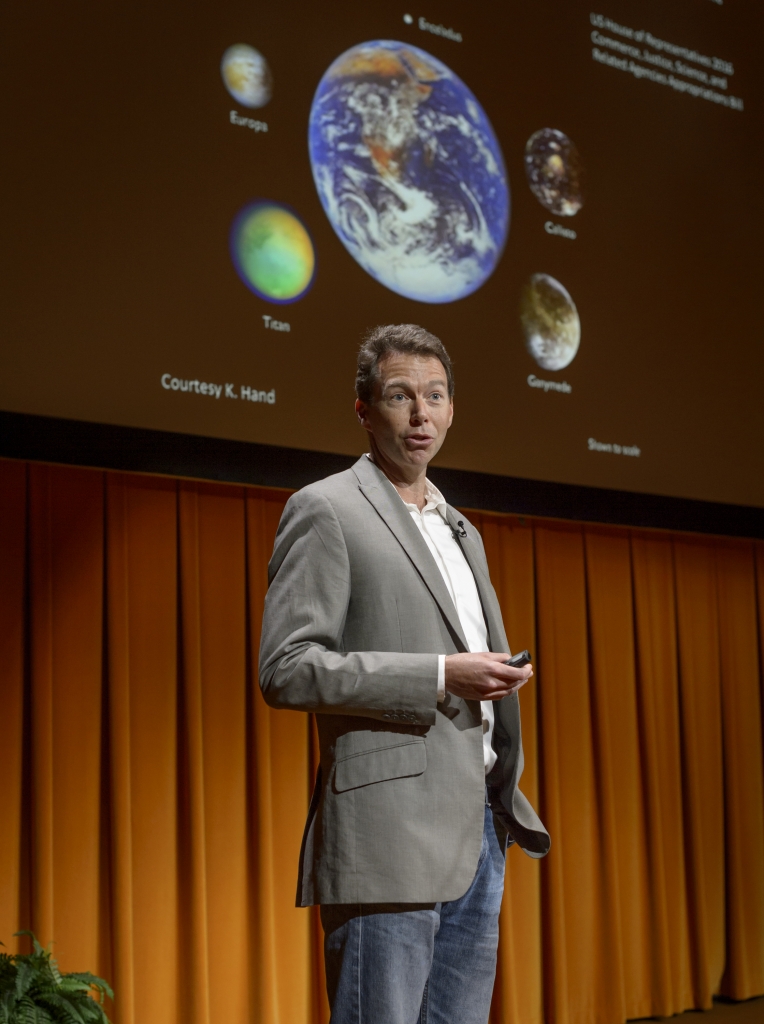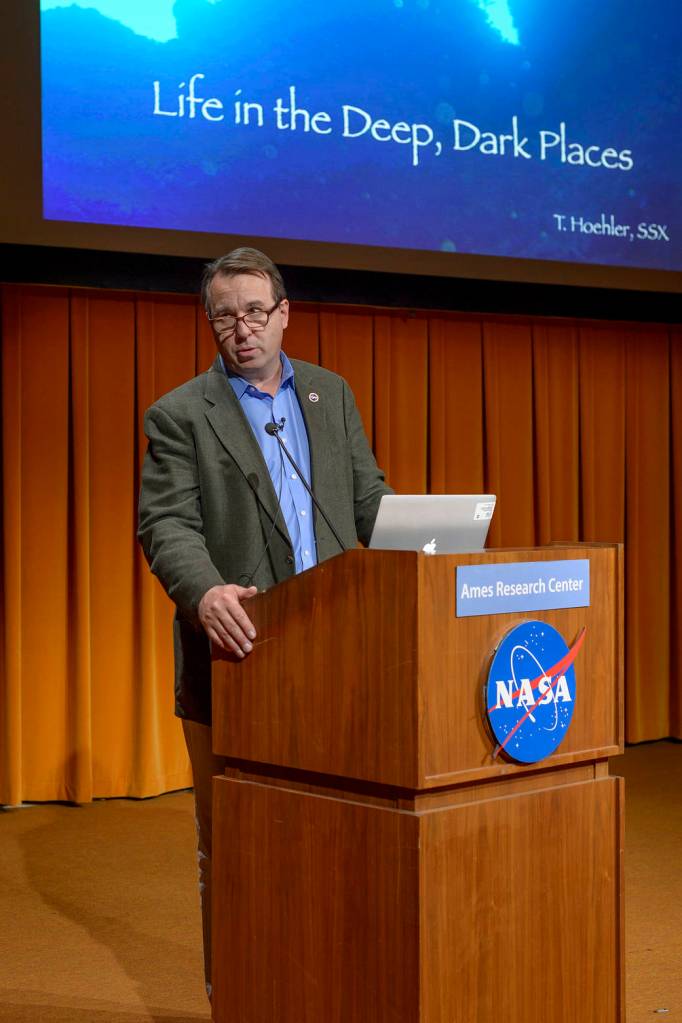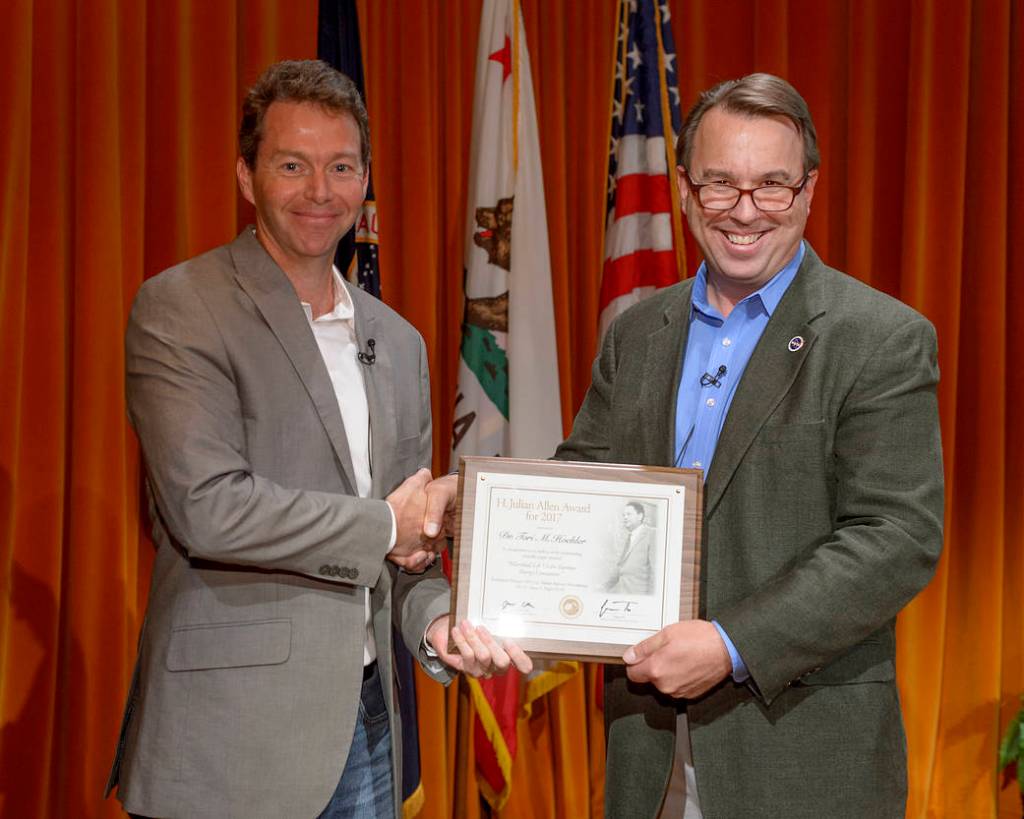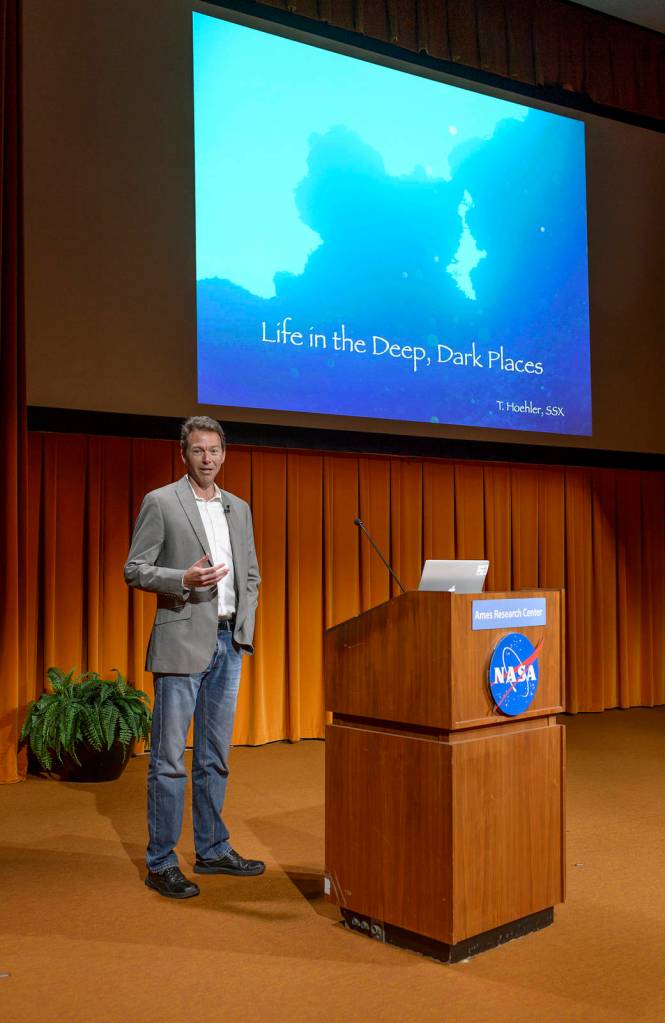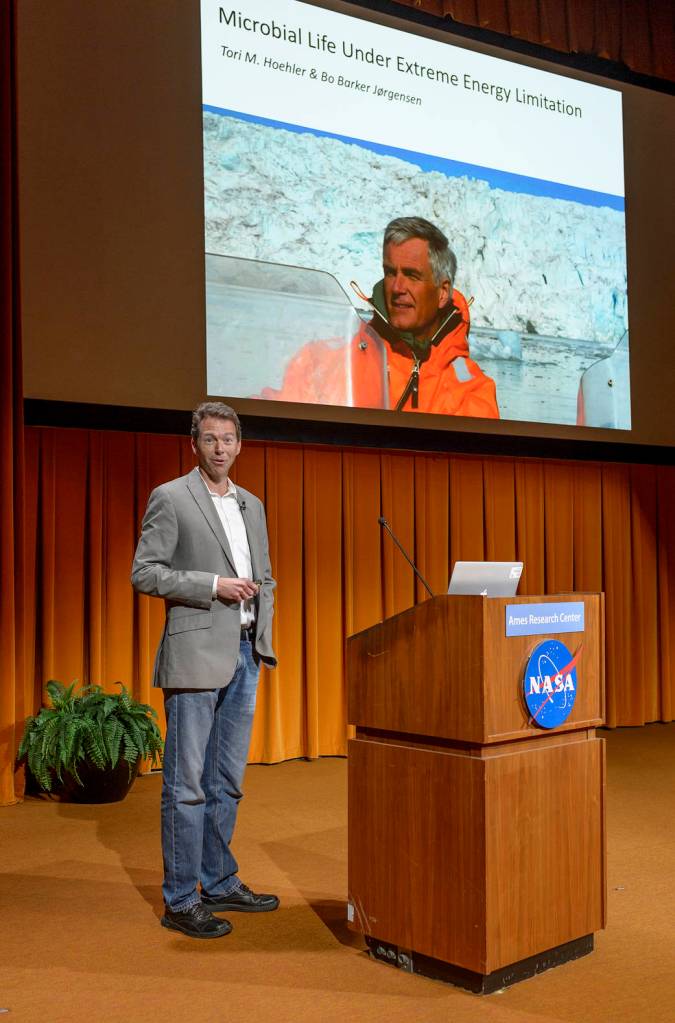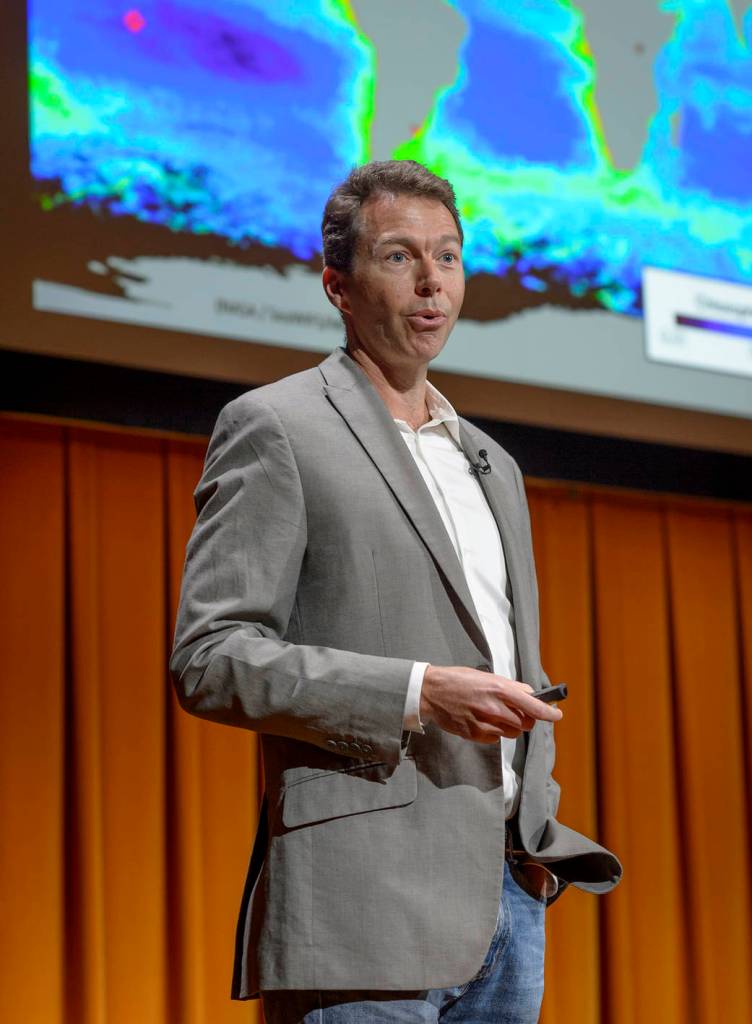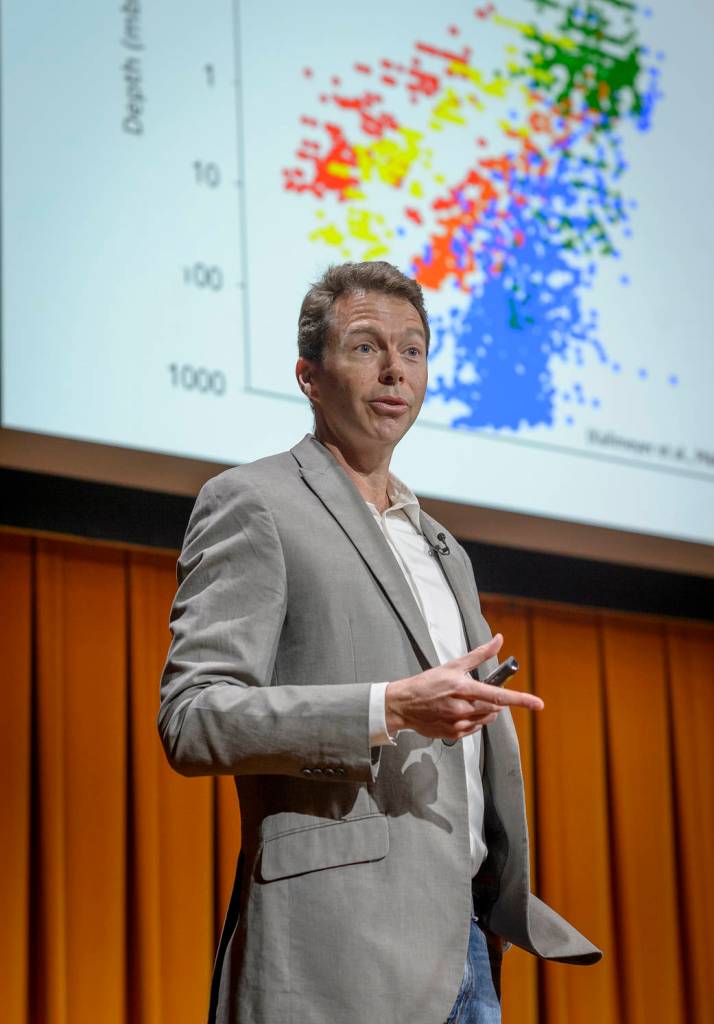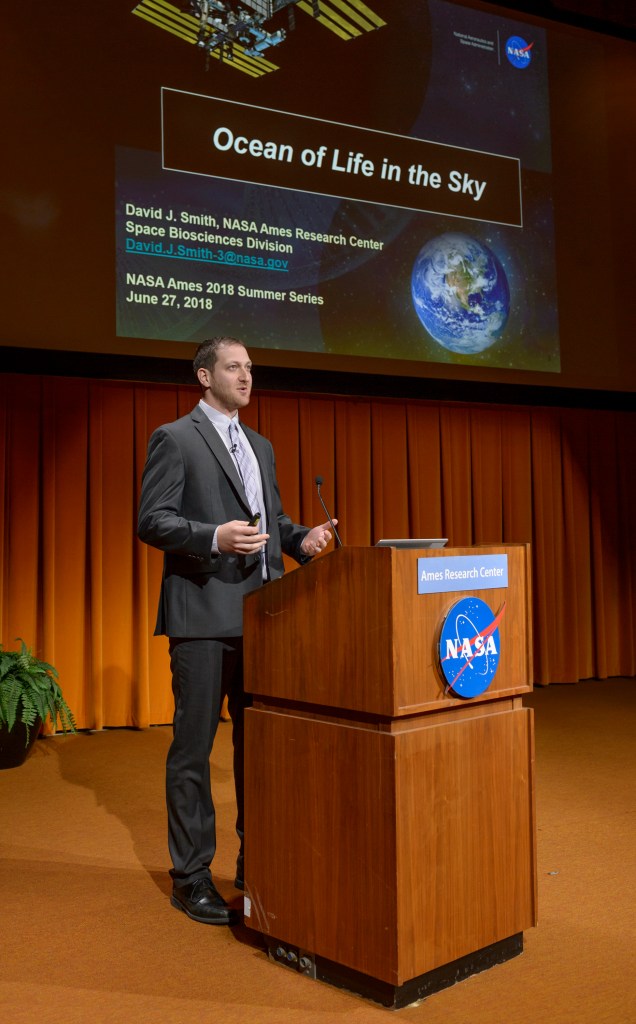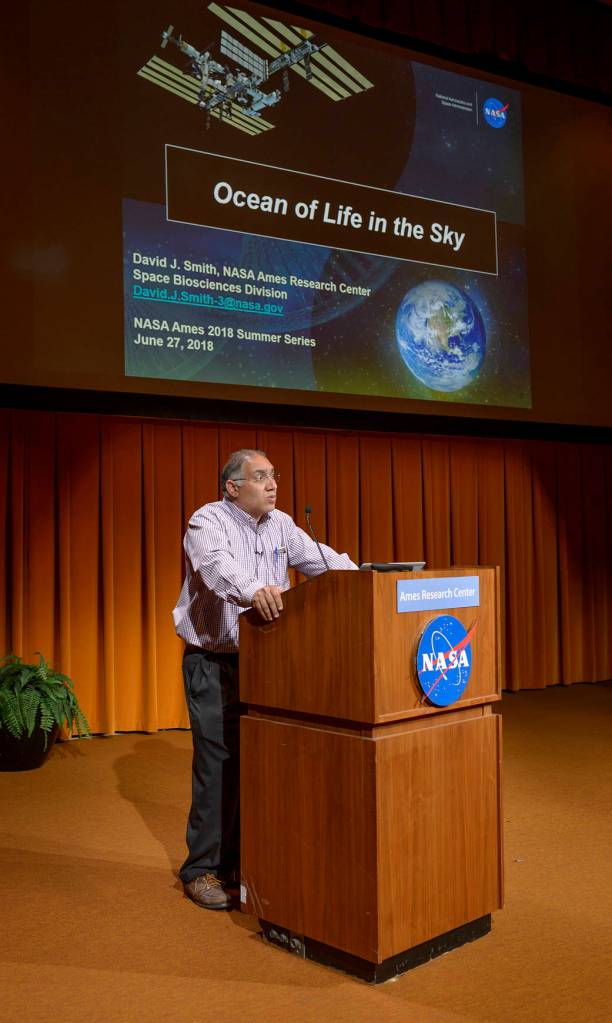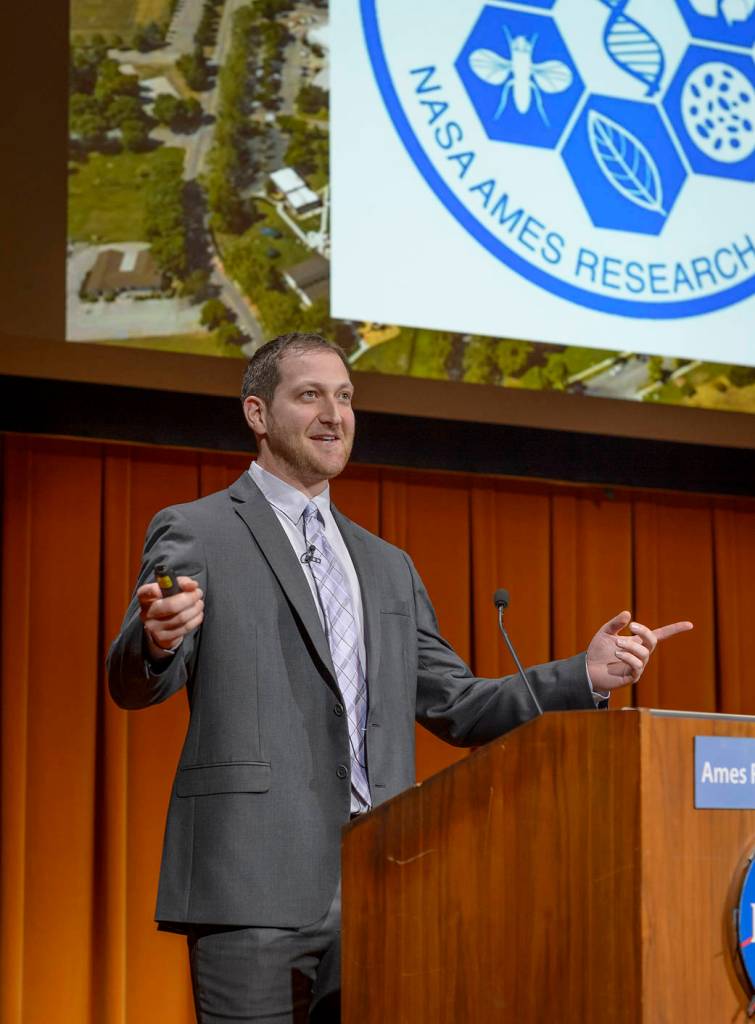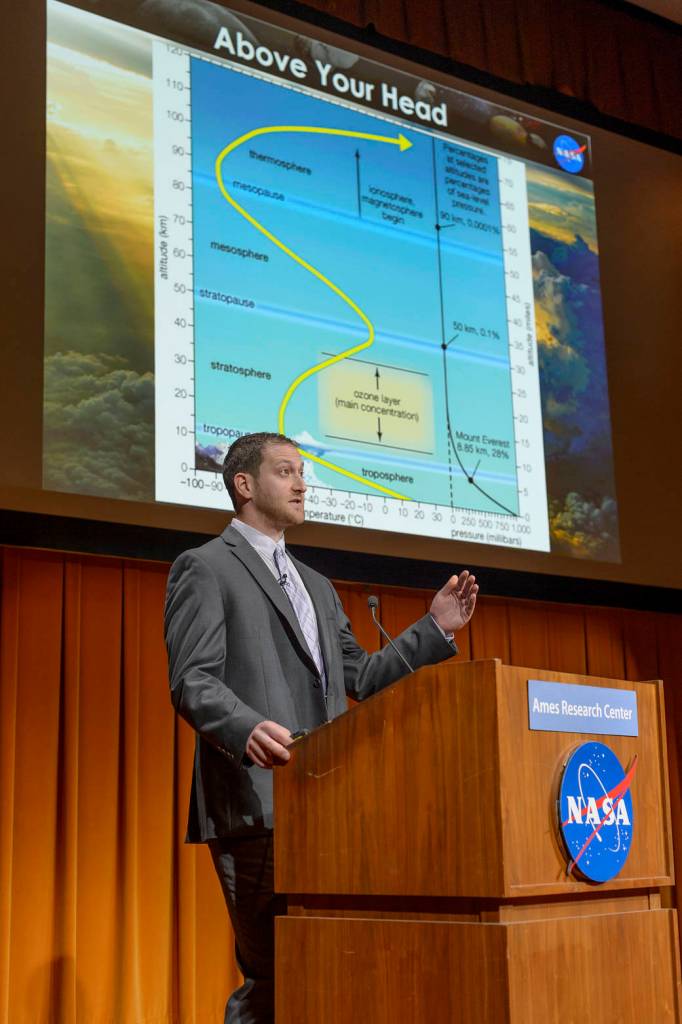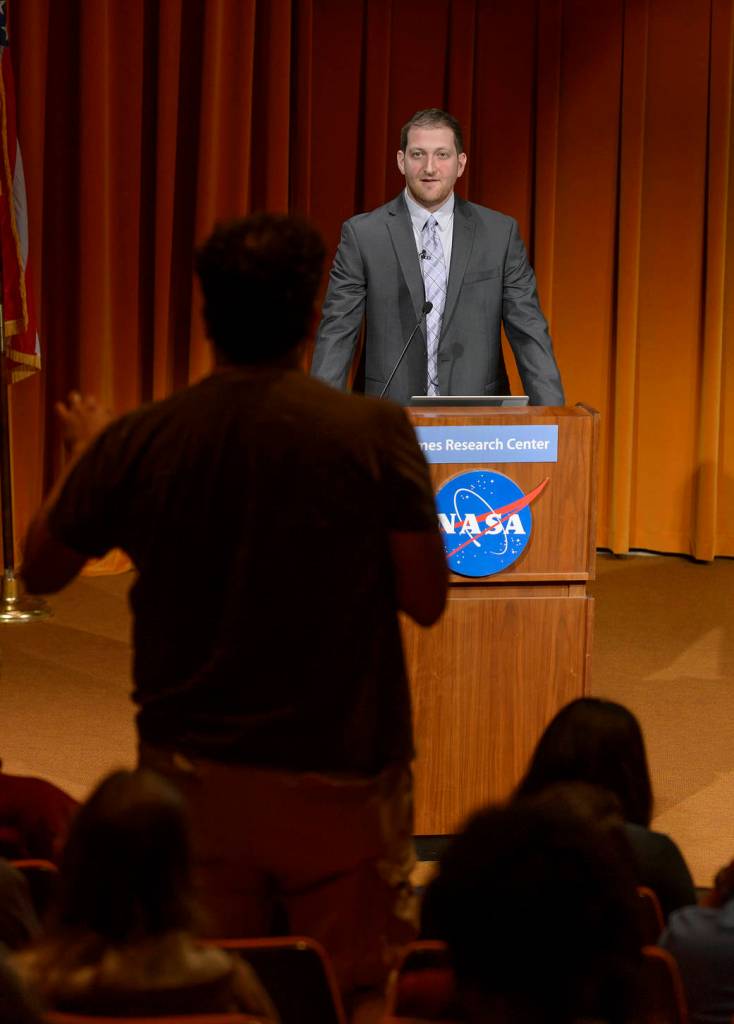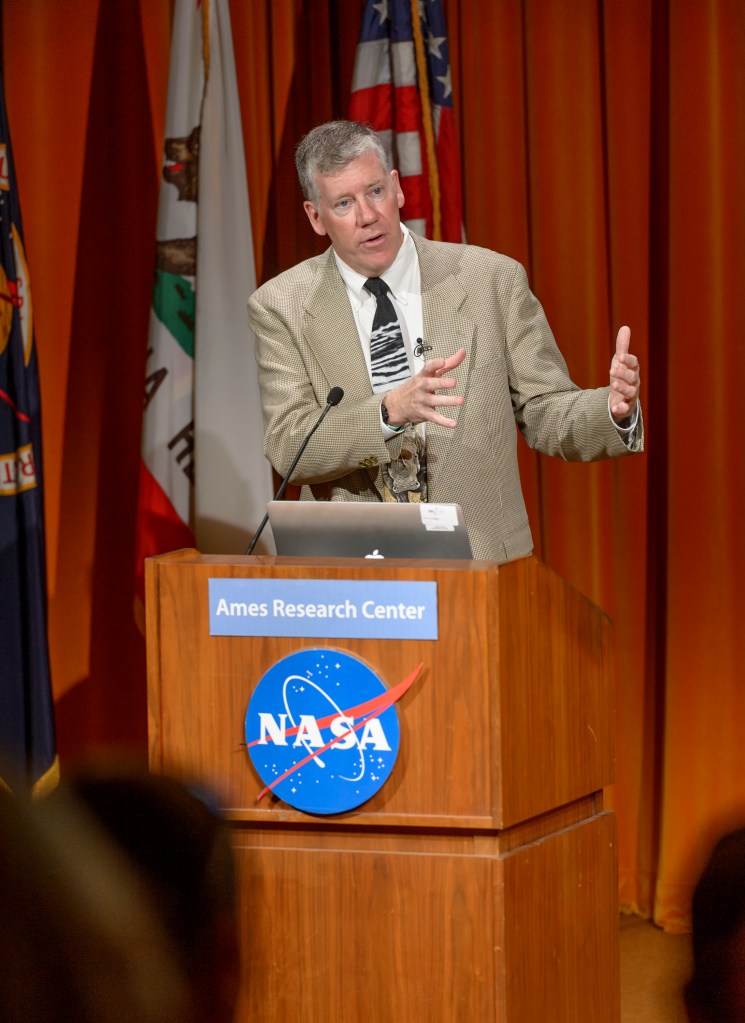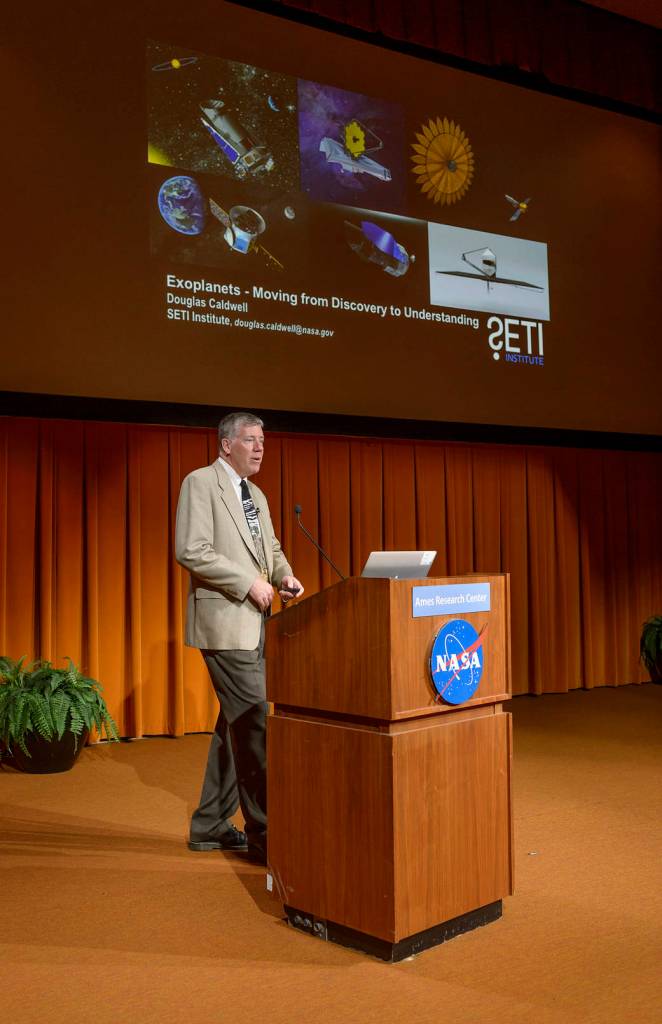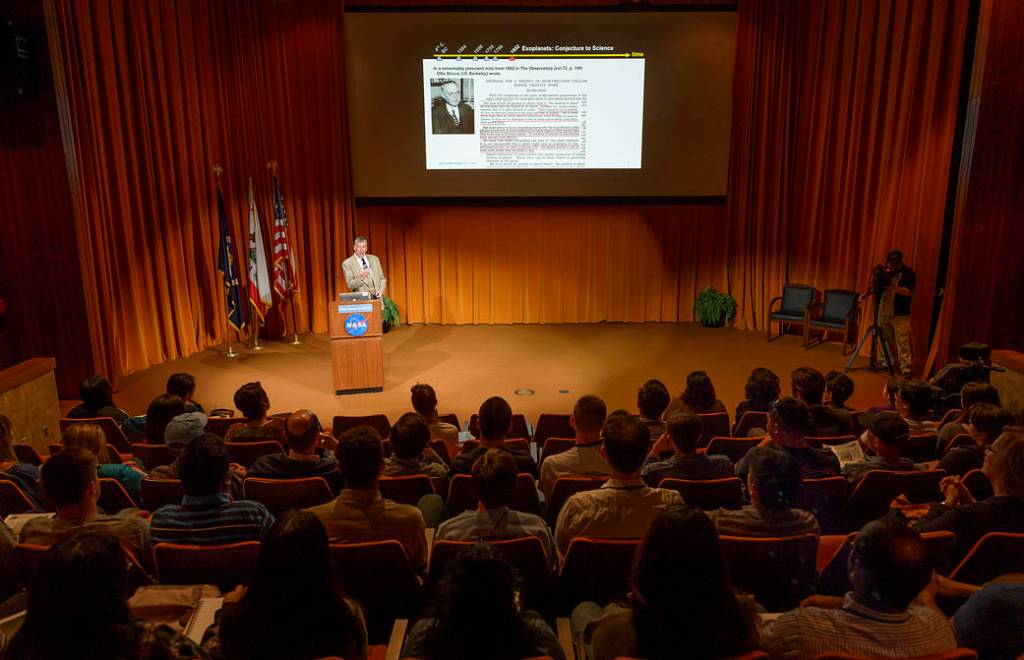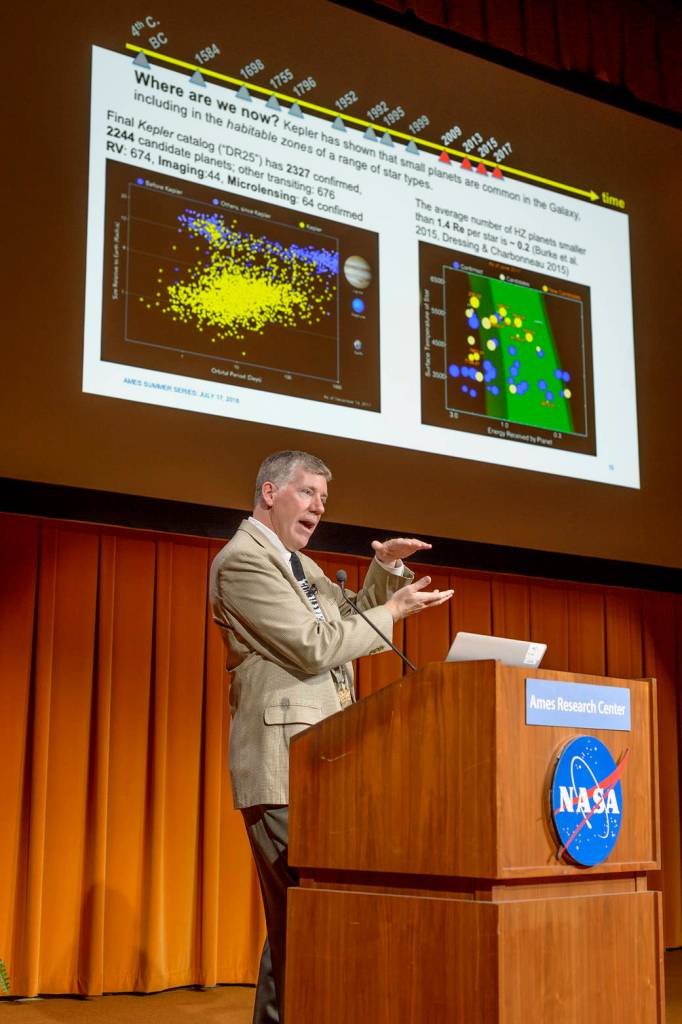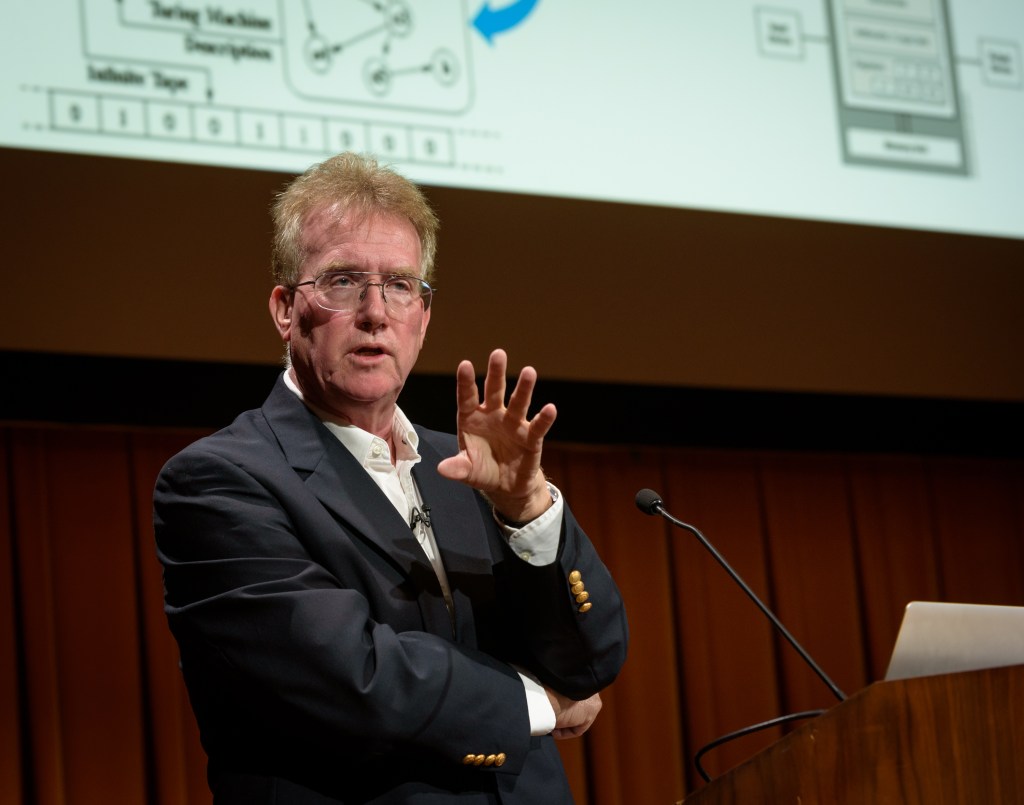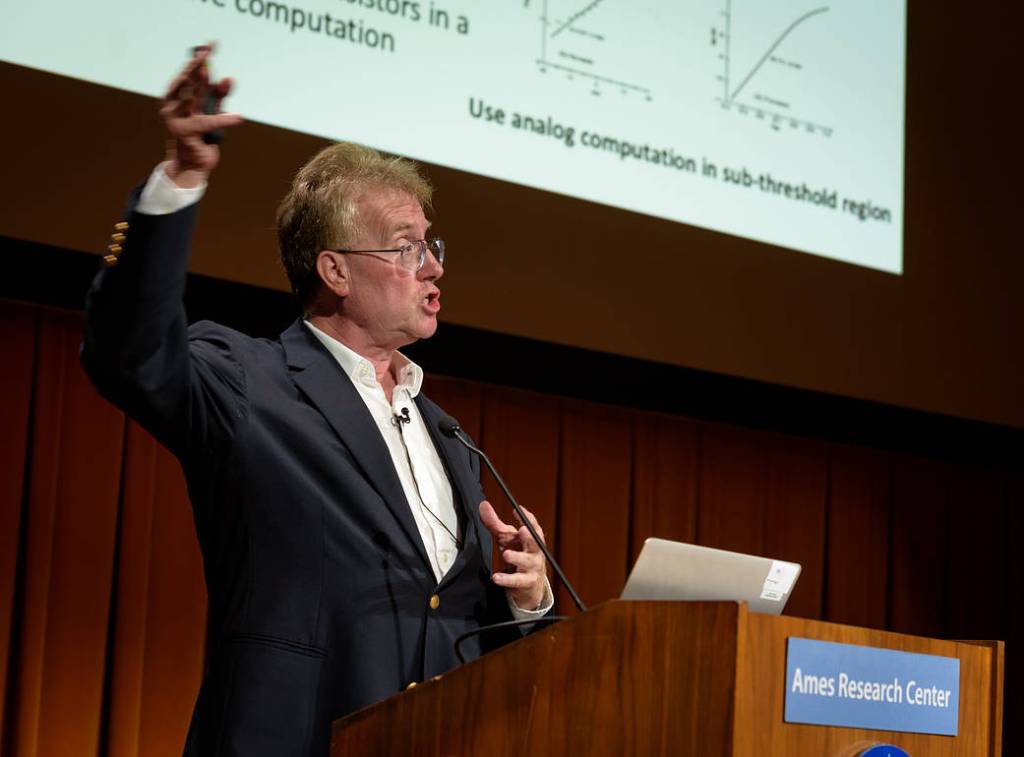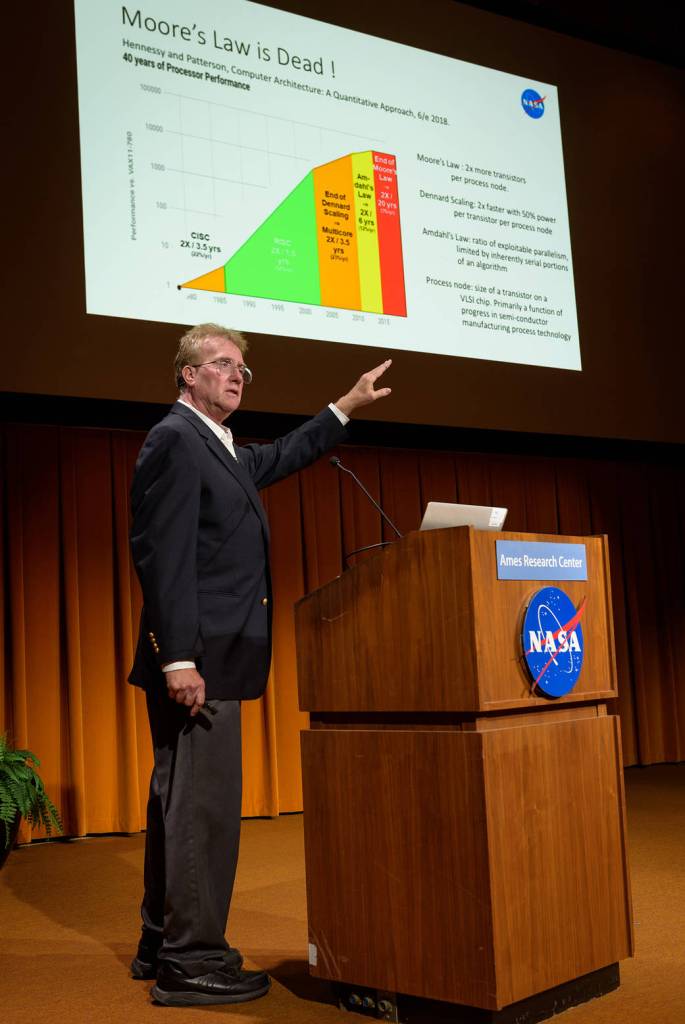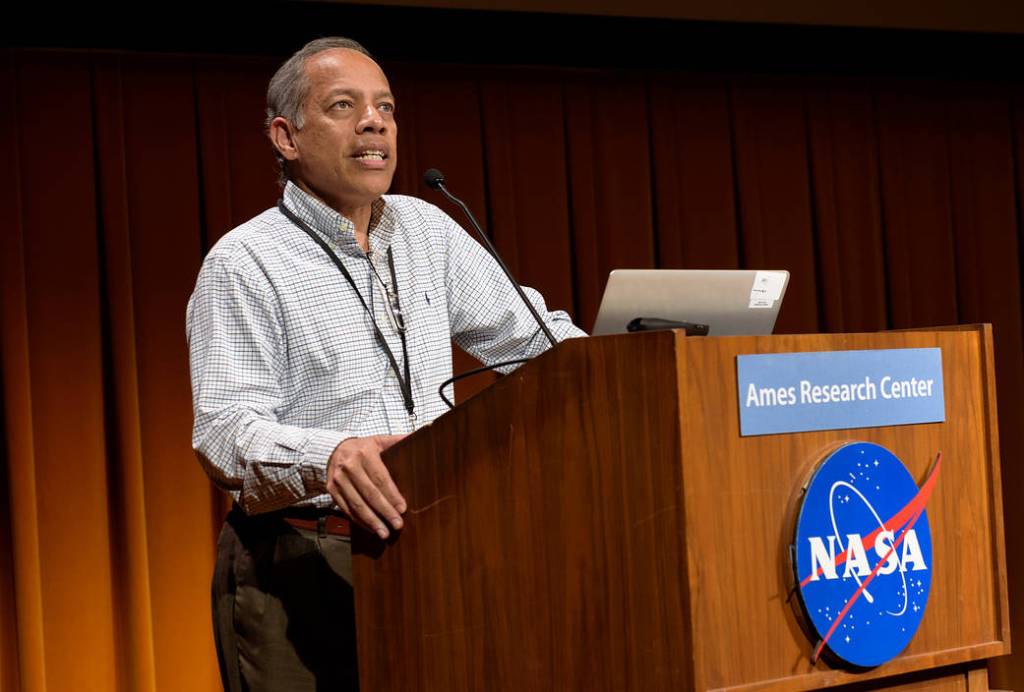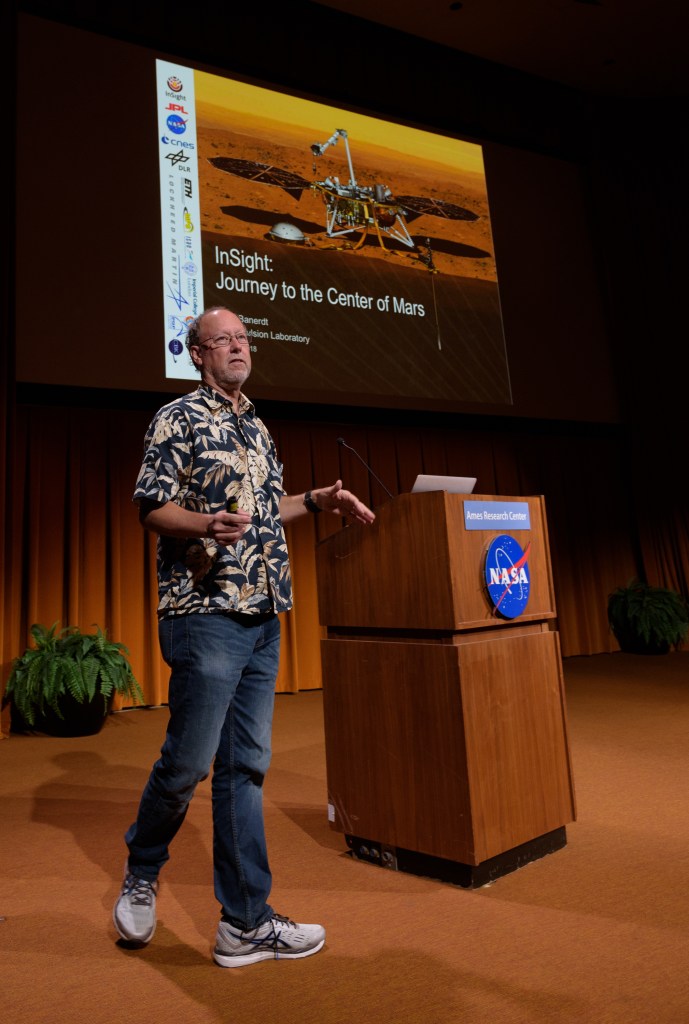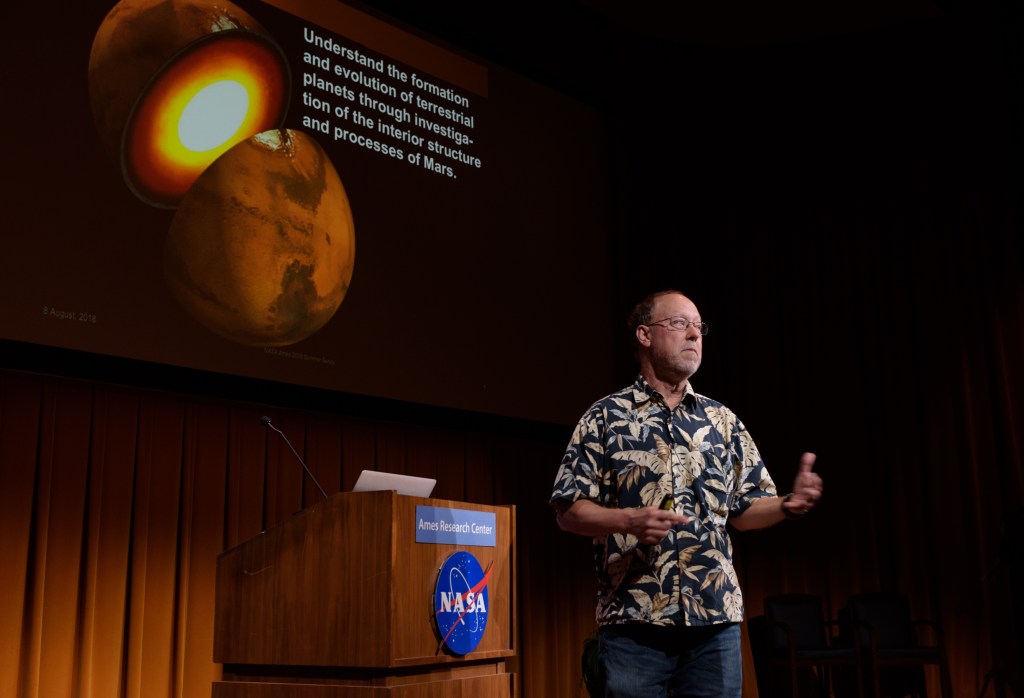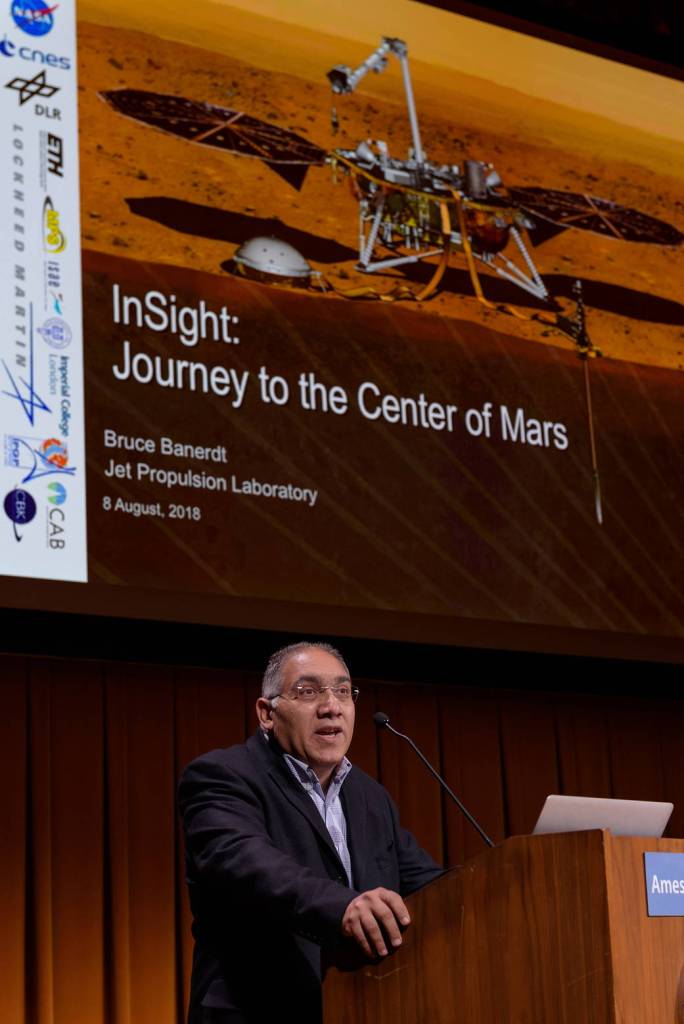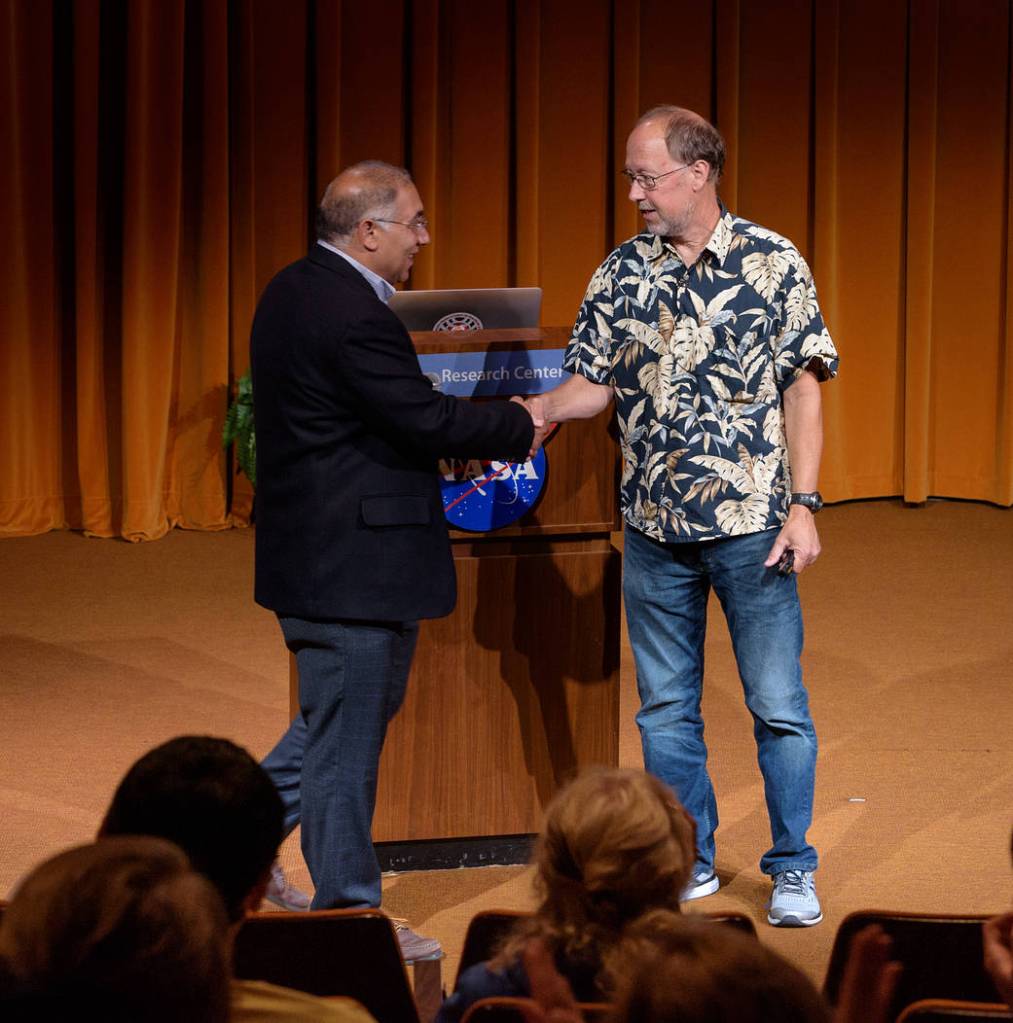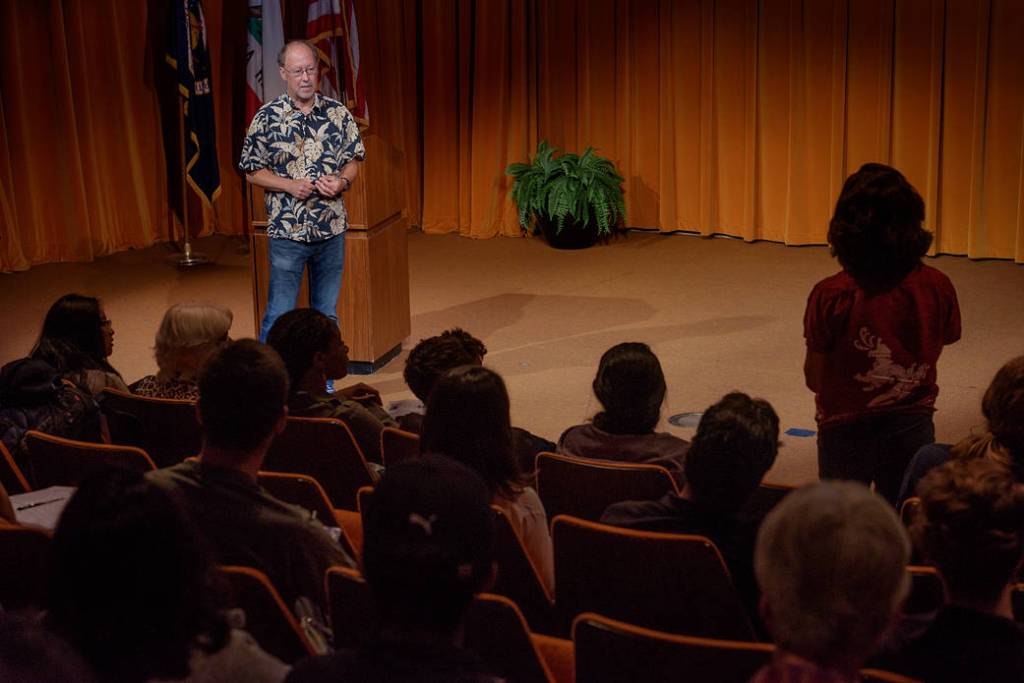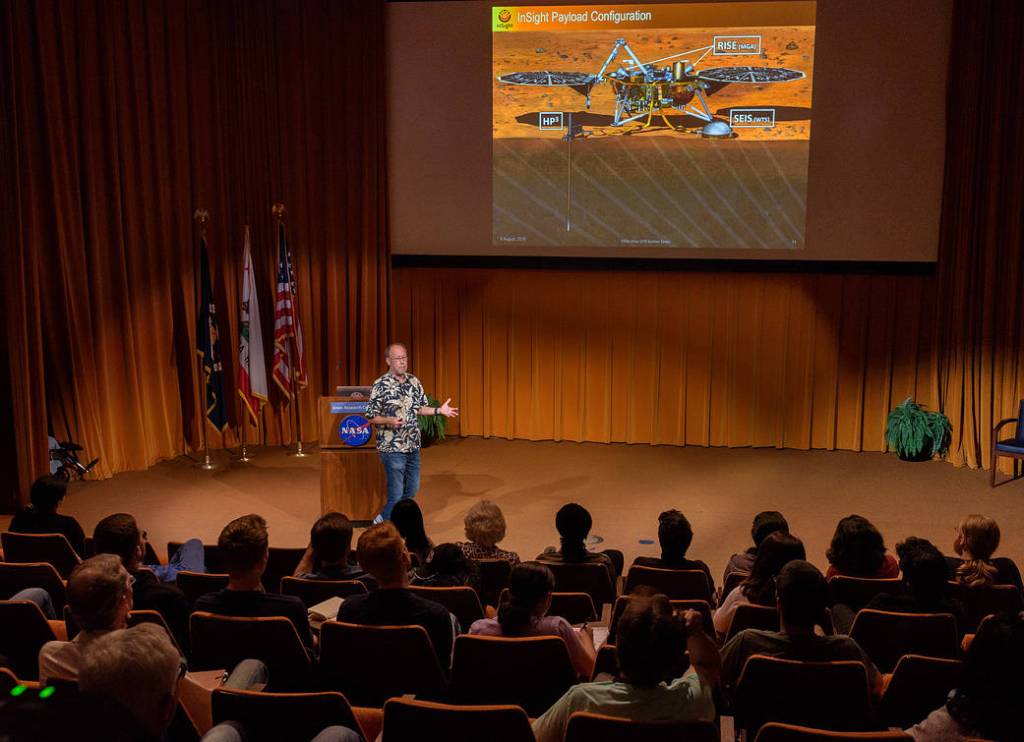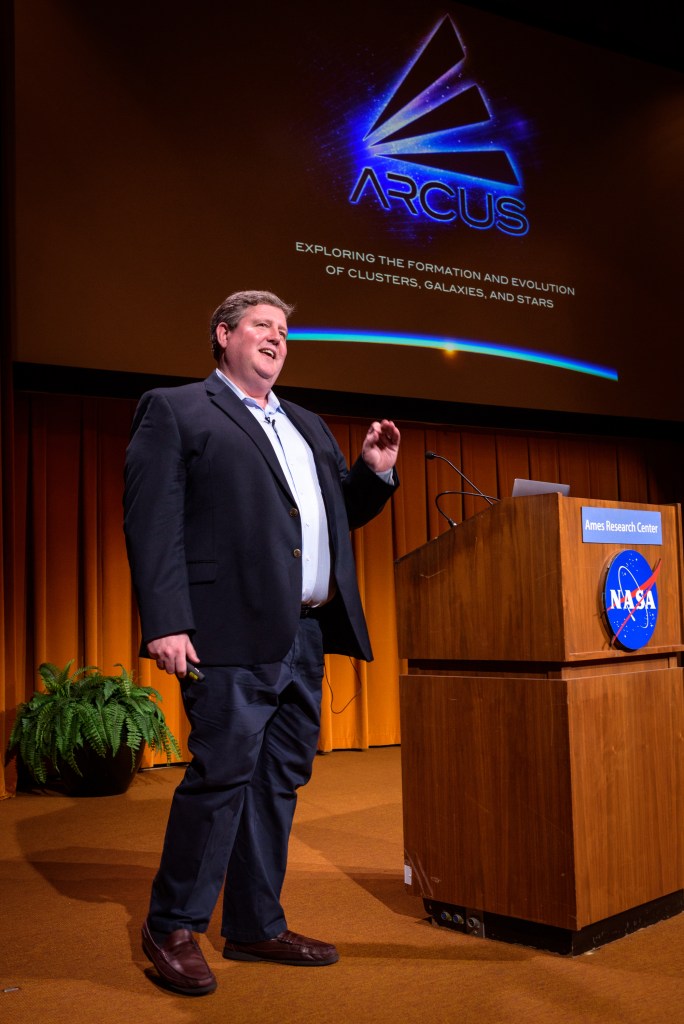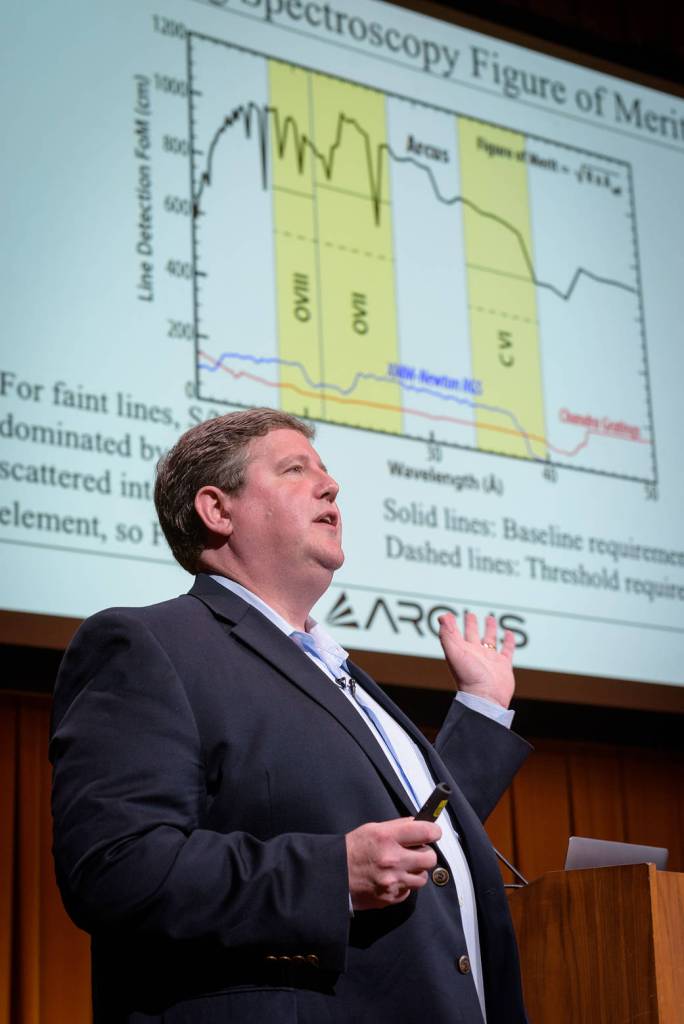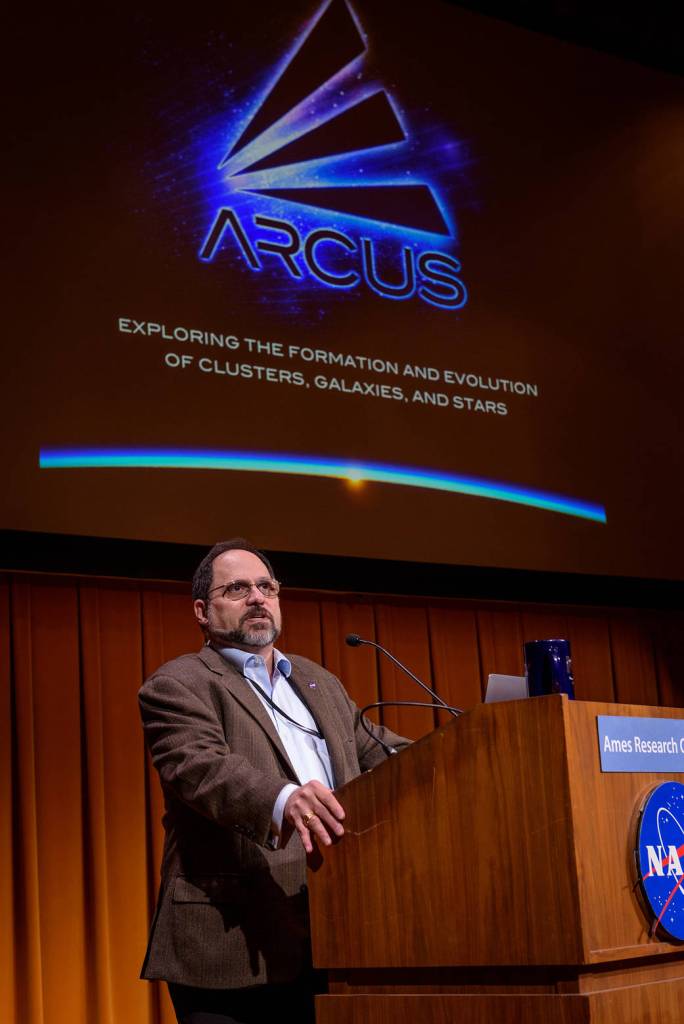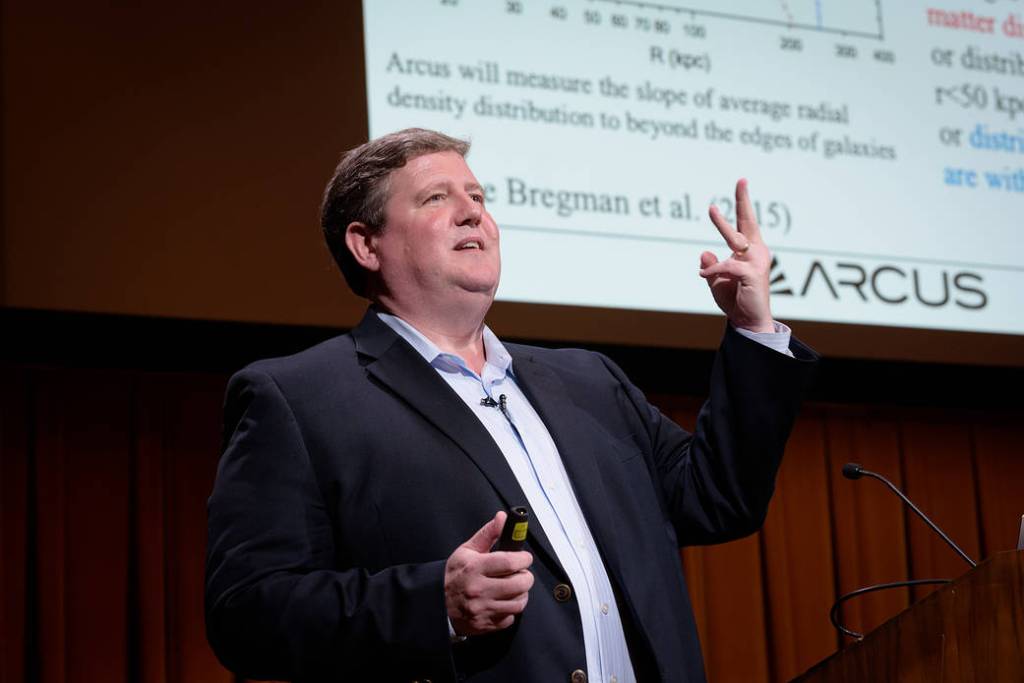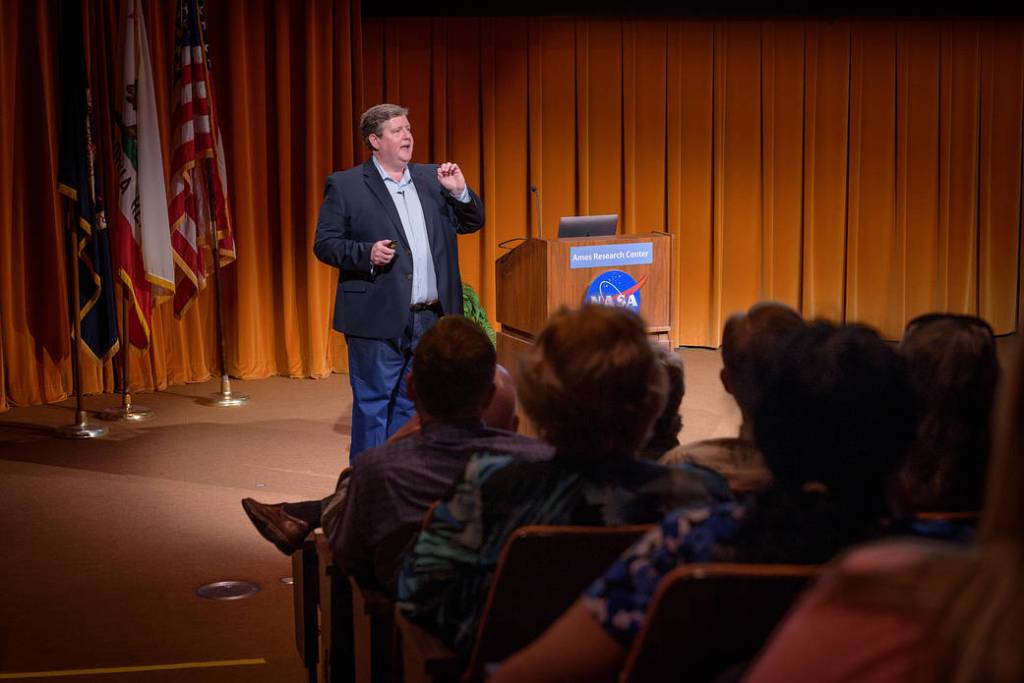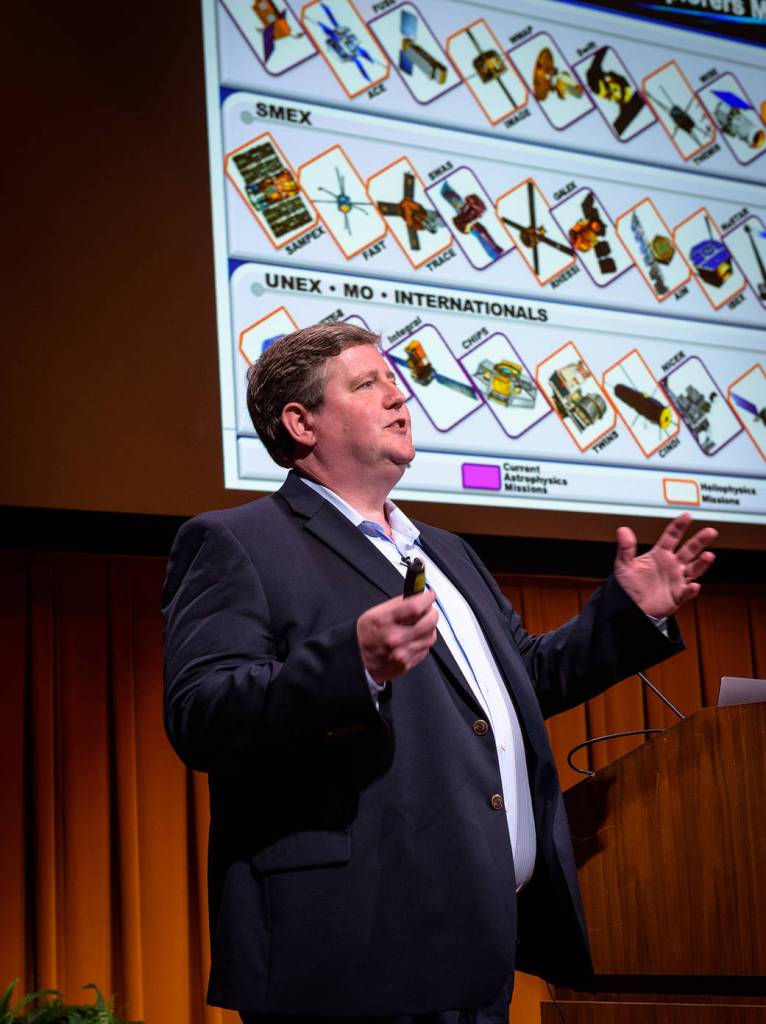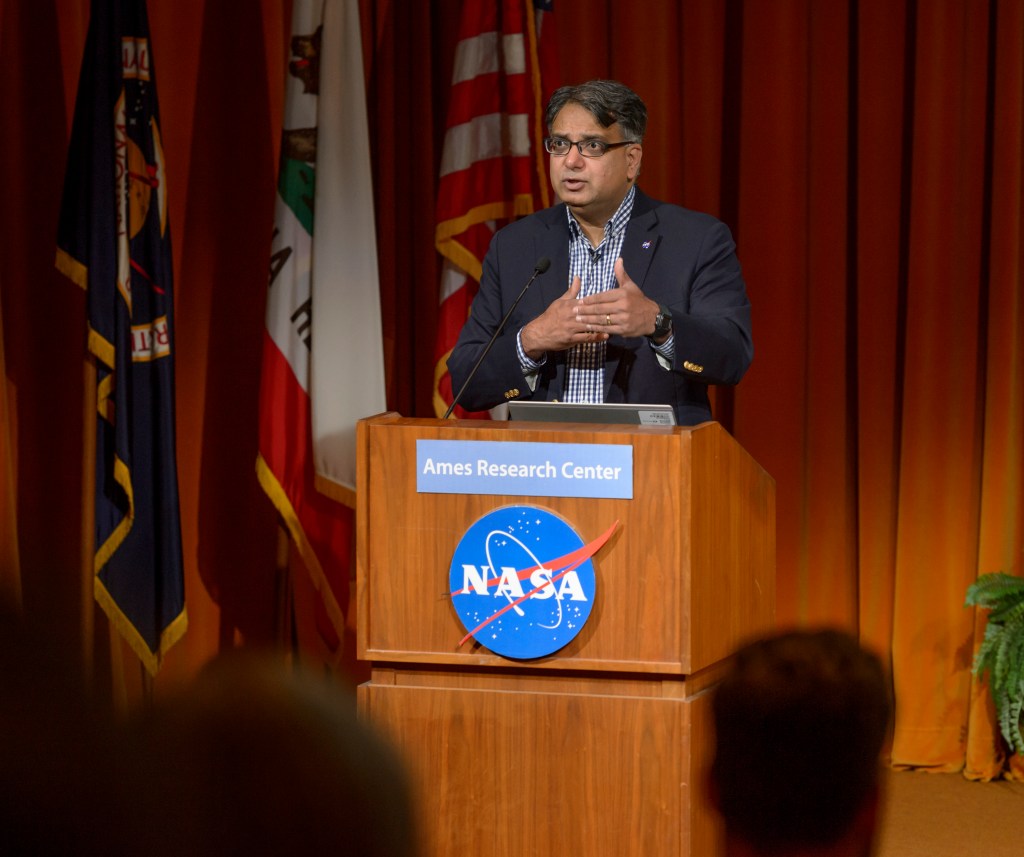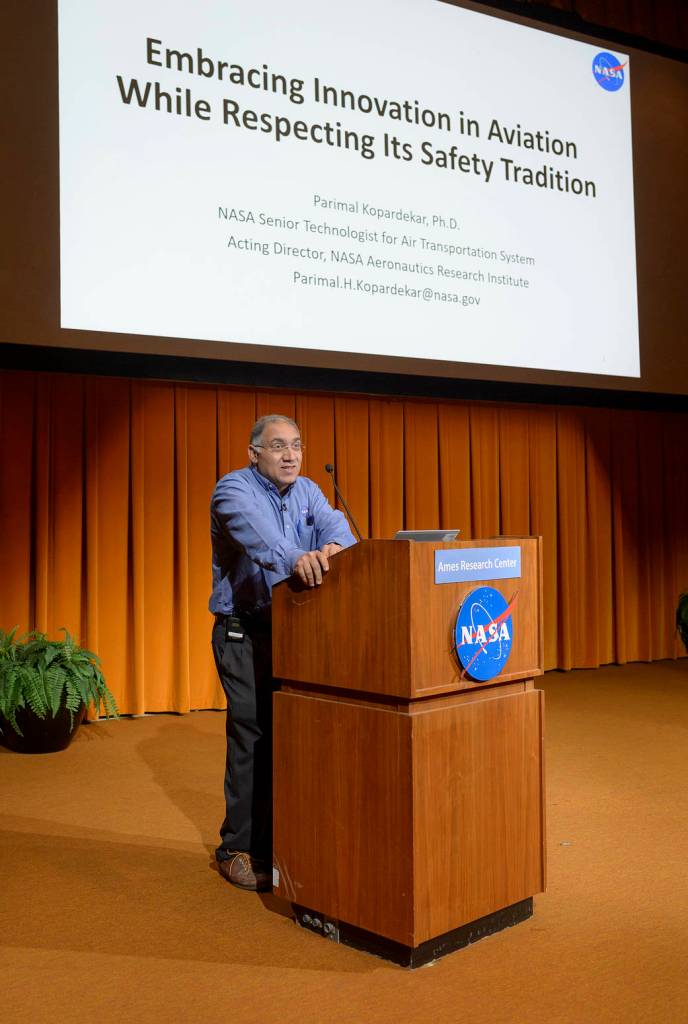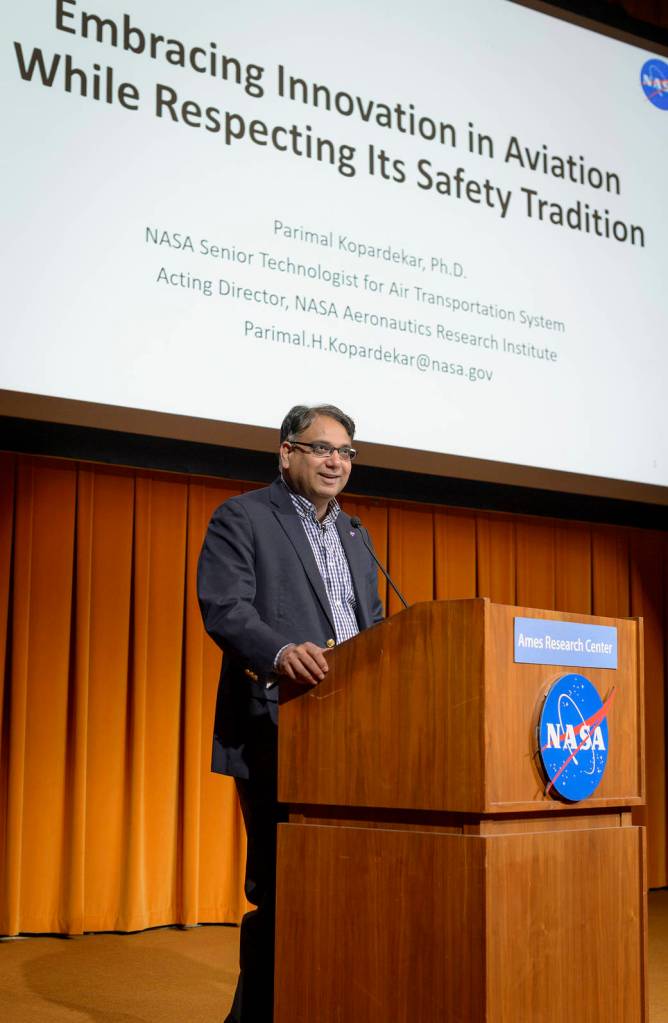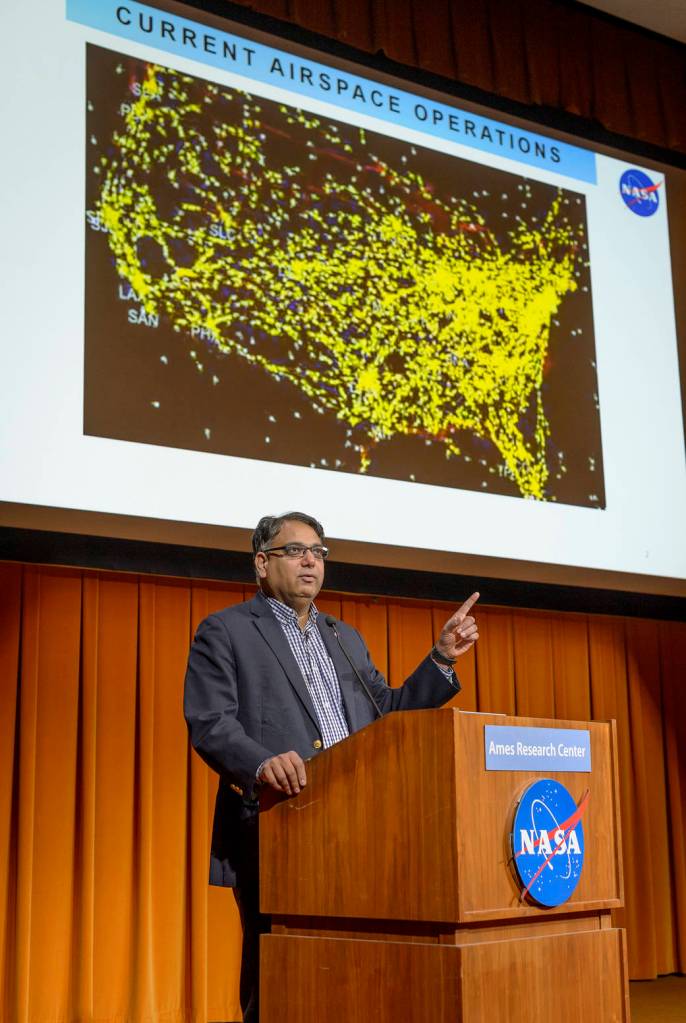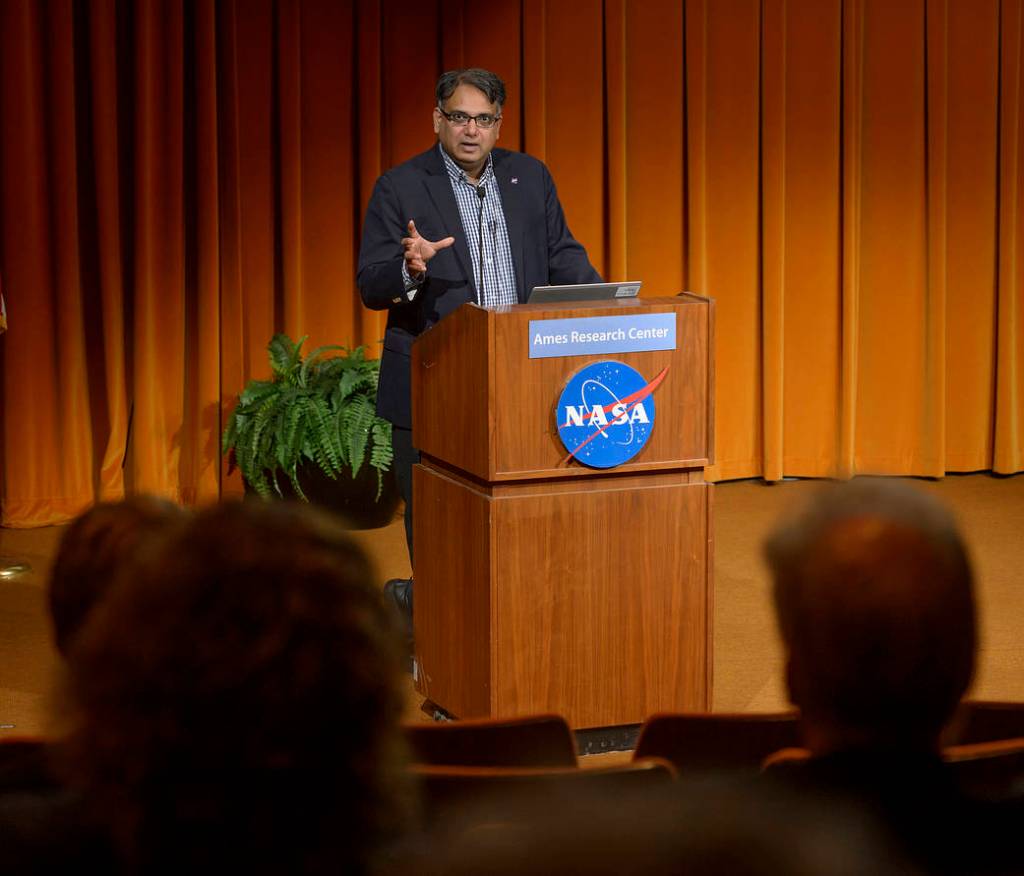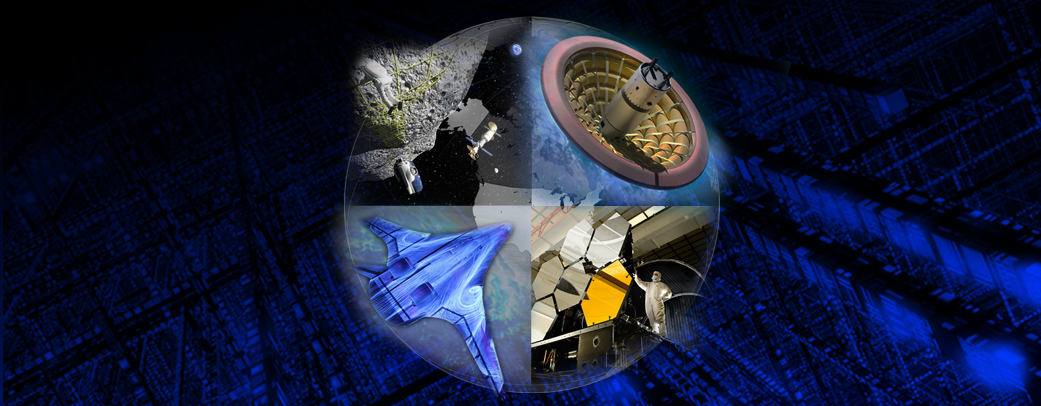2018 Summer Seminar Series
The Office of the Chief Scientist is pleased to announce the 2018 NASA Ames Summer Series! This year, the OCS has produced a platform for innovative discussion to inspire, catalyze scientific progress, share ideas, and communicate new and exciting concepts. The 2018 Series consists of 10 seminars from a collection of subject leaders from and external to NASA spanning across multiple subject areas including science and technology, science fiction and exploration.
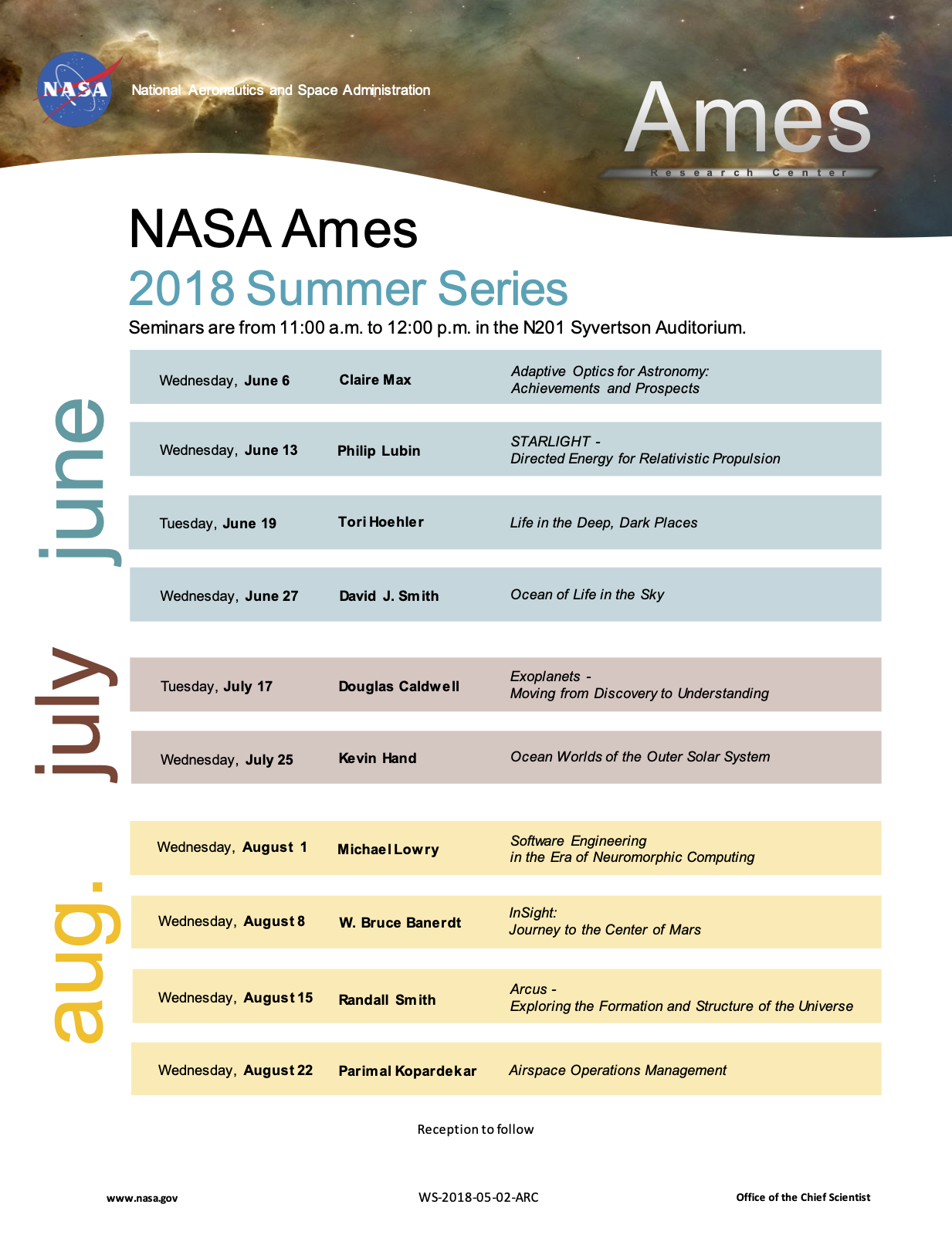 |
Claire Max
Adaptive Optics for Astronomy: Achievements and Prospects
Abstract:
Adaptive Optics is a technology that detects and corrects changing distortions in optical systems. It has been applied to great effect during the past decade to correct astronomical telescopes for blurring due to turbulence in the Earth’s atmosphere. This talk will describe how Adaptive Optics works, highlights some of its contributions to astronomy to date, and then focuses on the future prospects and plans. The creative interplay between ground-based adaptive optics and the capabilities of space-based telescopes will be highlighted.
Biography:
Claire Max is the Bachmann Professor of Astronomy and Astrophysics at the University of California, Santa Cruz, where she is Director of the University of California Observatories. She graduated from Radcliffe College (A.B.) and Princeton University (Ph.D.), and was a physicist at the Lawrence Livermore National Laboratory for many years. At UCSC she was a founder and director of the Center for Adaptive Optics.
Dr. Max’s current research interests include adaptive optics and laser guide stars to improve astronomical images. She uses these tools at the Lick and Keck Observatories to study the fate of supermassive black holes during mergers of nearby galaxies.
Dr. Max is a member of the National Academy of Sciences and the American Academy of Arts and Sciences. She is recipient of the Ernest O. Lawrence Award in Physics by the US Department of Energy, the James Madison Medal of Princeton University, and the American Astronomical Society’s Joseph Weber Award for Instrumentation.
Phil Lubin
STARLIGHT – Directed Energy for Relativistic Propulsion
The baggage you carry with you can limit your progress forward. Current space flight propulsion methods limit our space travel destinations. Disruptive approaches to space exploration propulsion may be the catalyst that is needed to truly allow us to explore the space frontier. In his presentation, Dr. Lubin discusses the concept of photonics and directed energy as an approach to achieving relativistic propulsion speeds for deep space exploration.
Abstract:
All propulsion systems that leave the Earth are based on chemical reactions. Chemical reactions, at best, have an efficiency compared to rest mass of 10-10 (or about 1eV per bond). All the mass in the universe converted to chemical reactions would not propel even a single proton to relativistic speeds. While chemistry will get us to Mars it will not allow interstellar capability in any reasonable mission time. Barring new physics we are left with few realistic solutions. None of our current propulsion systems, including nuclear, are capable of the relativistic speeds needed for exploring the many nearby stellar systems and exo-planets. However recent advances in photonics and directed energy systems now allow us to realize what was only a decade ago, simply science fiction, namely the ability to seriously conceive of and plan for relativistic flight. From fully-functional wafer-scale spacecraft capable of speeds greater than c/4 that could reach the nearest star in 20 years to 10 kg spacecraft travelling at 0.02 c to large missions capable of supporting human life with masses more than 105 kg (100 tons) for rapid interplanetary transit that could reach speeds of greater than 1000 km/s can be realized. With this technology spacecraft can be propelled to speeds currently unimaginable. Photonics, like electronics, and unlike chemical propulsion is an exponential technology with a current double time of about 20 months. The cost of such a system is amortized over the essentially unlimited number of launches and applications. In addition, the same photon driver can be used for many other purposes including planetary defense, space debris mitigation, standoff molecular composition analysis, long range power beaming, driving ultra high Isp ion engines among others. This would be a profound change in human capability with enormous implications. The NASA Starlight program is in the third year of funding including a current NASA Phase II program as well as private funding. The core technology is also the basis for two other recent NASA Phase II NIAC programs, one for powering ultra high Isp ion engines and another for remote composition analysis of asteroids. Starlight is also the basis for the Breakthrough Starshot program.
The FY 2017 congressional appropriations request directs NASA to study the feasibility of an interstellar mission to coincide with the 100th anniversary of the moon landing. Seen from a different perspective this technology has significant implications for SETI searches with visibility of this technology beyond redshift 20 should there exist another civilization trying to beacon its existence. Dr. Phil Lubin discusses the many technical challenges ahead, his laboratory prototypes and recent data on kilometer baseline arrays as well as the transformative implications of this program.
Biography:
Philip Lubin is a professor of Physics at UC Santa Barbara whose primary research has been focused on studies of the early universe in the millimeter wavelengths bands as well as applications of directed energy for planetary defense and relativistic propulsion. His group has designed, developed and fielded more than two dozen ground based and balloon borne missions and helped develop two major cosmology satellites. Among other accomplishments his group first detected the horizon scale fluctuations in the Cosmic Microwave Background from both their South Pole and balloon borne systems twenty years ago and their latest results, along with an international teams of ESA and NASA researchers, are from the Planck cosmology mission which have mapped in exquisite detail the structures of the early universe. He is a co-I on the Planck mission. His group has worked on applications of directed energy systems for both small scale single launcher solutions as well as large standoff systems for planetary defense and on applications to allow small interstellar probes to achieve relativistic speeds for the first interstellar missions. He is director of the NASA Starlight program, currently in a Phase II whose goal is to use directed energy for humanity’s first interstellar missions. He is also concept director for the Breakthrough Starshot program whose goals are also to achieve relativistic flight with miniature spacecraft. He is co-recipient of the 2006 Gruber Prize in Cosmology along with the COBE science team for their groundbreaking work in cosmology as well as the 2018 Gruber Prize in Cosmology along with the Planck science team for their determination of fundamental cosmological parameter. He has published more than 400 papers.
Tori Hoehler
Life in the Deep, Dark places
The H. Julian Allen Award recognizes a scientific or engineering paper of outstanding technical merit and significance. It is truly one of Ames’ highest honors. In 2017, Dr. Tori Hoehler was awarded the H. Julian Allen Award for the paper Microbial life under extreme energy limitation,” published in the Nature Reviews Microbiology, 11(2), 83-94, (February 2013).
Abstract:
Should life exist elsewhere in our solar system, it would likely be limited to subsurface environments: deep, dark places where the availability of energy to fuel biology may be orders of magnitude lower than at Earth’s sunlit surface. Yet it is the energy-rich, sunlit world around us that shapes much of our present understanding of life. In this talk, Hoehler describes efforts to characterize life in Earth’s own deep, dark places, understand its dependence on energy, and explore the implications for the detectability of life beyond Earth.
Biography:
Tori Hoehler came to ARC’s Exobiology Branch in 1998, with a background in chemistry and oceanography. He now studies the interaction of microbial communities with their environment, with an emphasis on the habitability of environments beyond Earth and the detectability of any life that may reside there. He is the founding co-director of ARC’s Center for Life Detection, a Fellow of the California Academy of Sciences and a Kavli Frontiers of Science Fellow, and recipient of the NASA Exceptional Scientific Achievement medal.
David J. Smith
Ocean of Life in the Sky
Abstract:
Airborne microorganisms in the upper atmosphere remain elusive due to a lack of reliable sample collection systems. To address this problem, we designed, installed, and flight-validated a novel instrument for NASA’s C-20A aircraft that can make collections for microbiological research investigations up to altitudes of 13.7 km. Herein we will report results from the first set of C-20A science flights – four consecutive missions flown over the United States in autumn 2017. Several viable bacterial isolates were captured from flight altitudes, including Bacillussp., Micrococcussp., Arthrobactersp. Staphylococcussp. and Brachybacteriumsp. Using DNA sequencing methods for a culture-independent analysis, hundreds of taxa were detected including bacteria from the genera Clostridium,Mogibacterium, Corynebacterium, Bacteroides, Prevotella,Pseudomonas and Parabacteroides. Surprisingly, our results revealed a homogenous distribution of bacteria in the atmosphere up to 12 km. The finding could be due to meteorological conditions producing similar background aerosols across the western during the sampling campaign. Considering the tremendous engineering challenge of collecting biomass at extreme altitudes where contamination from flight hardware remains an ever-present issue, we will discuss the utility of using the stratosphere as a proving ground for planned life detection missions across the solar system.
Biography:
Dr. David J. Smith is Director of the Aerobiology Laboratory at NASA Ames and Deputy Chief of the Space Biosciences Research Branch. He received his B.A. in Ecological & Evolutionary Biology from Princeton University in 2007 and his Ph.D. in Biology & Astrobiology from the University of Washington in 2012. During his 10 year NASA career, David’s teams have examined microbial responses to extreme environments with payloads flown on high altitude aircraft (ER-2, C20A), scientific balloons, and to the International Space Station. More recently, his scientific leadership contributed to the success of sequencing DNA in space for the first time ever, and the novel use of high altitude balloons for conducting astrobiology experiments. His independent research has been funded by the National Science Foundation and multiple NASA programs (Astrobiology, Chief Engineer, Space Biology, Chief Scientist, Biodiversity, and the Translational Research Institute for Space Health). David is considered an international authority on the long-range transport of airborne microorganisms, focusing primarily on the transpacific corridor that delivers bioaerosols to North America each spring in prevailing upper atmospheric winds. For his research and project achievements, David was awarded the NASA Early Career Achievement Medal in 2016.
Douglas Caldwell
Exoplanets – Moving from Discovery to Understanding
Abstract:
In less than 25 years, the study of Exoplanets has gone from a niche field to a major field of study with groups at most universities, numerous international conferences, prominent NASA missions, and international research programs. Exoplanet discoveries have moved from one-by-one finds to large teams announcing hundreds of planets at a time. During this time, the discovery of thousands of worlds around other stars has shown that planets orbit most of the stars in our Galaxy, thanks in large part to NASA Ames’ own Kepler Mission.
This talk describes the current state of Exoplanet studies and some of the next steps, now that we know planets are common; including to determine how many of these planets are Earth-size, which are potentially habitable, and ultimately, if any are inhabited.
Biography:
Dr. Douglas Caldwell of the SETI Institute is the Instrument Scientist for the Kepler/K2 Mission and works in the TESS Science Processing Operations Center.
Dr. Caldwell studied physics at Carnegie-Mellon (BS) and Rensselaer Polytechnic Institute (PhD). He worked on the pioneering ground-based Vulcan planet search as a post-doc at NASA Ames and has worked on the Kepler mission since the proposal phase. Dr. Caldwell’s focus has been on the front end of the Kepler data processing pipeline, particularly instrument calibration and systematic noise rejection. As the Kepler and K2 Instrument Scientist, Caldwell led the team that identified and characterized several critical noise artifacts in Kepler data. Over the last 18 years, he has worked on all aspects of Kepler’s science from data analysis to planet validation and follow-up. Dr. Caldwell hopes to help answer the next questions in exoplanet research through his work with the TESS mission, whose goal is to find planets suitable for detailed study of their atmospheres with James Web Space Telescope.
Throughout his career, Dr. Caldwell has been working to understand how instruments affect science data in order to improve data analysis, and to help scientists understand how data analysis impacts their science results.
Kevin Hand
Ocean Worlds of the Outer Solar System
(CANCELED)
Michael Lowry
Software Engineering in the Era of Neuromorphic Computing
Abstract:
After fifty years of exponential improvements in Von Neumann computing, Moore’s Law is running out. What will replace conventional computers as the next driver in the decades ahead? One pathway is brain-inspired computing – using lessons from the brain to inform new architectures that are much more energy efficient, capable of massive parallel processing, and capable of learning in-situ.
This lecture describes the emerging field of Neuromorphic computing, and how it will change hardware and software engineering. This field has been energized by the success of deep machine learning, which since 2012 has led to computers achieving human-level performance in image classification, speech understanding, and many other tasks. Neuromorphic computing emulates the brain with layers of silicon artificial neural nets that do inference through the weights of artificial synapses between neurons, and in advanced models does machine learning on the chip in-situ. The trade space for Neuromorphic processors will be described highlighting recent chips including Goggle’s TensorFlow Processor Unit and Intel’s Loihi chip. Software engineering will undergo a paradigm shift in the era of Neuromorphic computing reflecting hardware advances.
Biography:
Dr. Michael Lowry is the NASA Senior Scientist for Software Reliability. He has served as NASA’s Lunar Surface Systems Software Architect (2008-2011), software lead in the Toyota unintended acceleration investigation (2010), and DARPA chief scientist for the META project investigating cyber-physical system development principles that are correct-by-design (2012 – 2015).
Since 2015, he has led as principle investigator the Autonomy Operating System project (AOS). AOS has developed an open flight software architecture incorporating heterogeneous artificial intelligence reasoning capabilities. The goal of AOS is to achieve an autonomous pilot that can navigate and communicate in the National Airspace System. AOS incorporates NASA core flight software (CFS) as its embedded platform foundation; cFS has been certified on more than two dozen space missions.
Lowry has been the Ames lead on NASA’s high-performance space computer, whose goal is to provide a radiation-tolerant CPU that reaches tens of gigaflops performance while using minimal power. His interest in Neuromophic computing is to advance aerospace processors further orders of magnitude to enable smart agents for both space and aviation.
W. Bruce Banerdt
InSight: Journey to the Center of Mars
A running theme throughout the 2018 Summer Series has been the duality of in situ vs. analog. That is, the study of environments here on Earth can inform us of environments not of Earth, and vice versa. NASA has consistently found value in both forms of research, with JPL’s InSight mission serving as a chief example. Dr. W. Bruce Banerdt discusses InSight’s objective to study the Martian planetary structure, and what this could mean for the evolution of Earth and Earth-like planets.
Abstract:
The InSight mission launched in May of this year and will land in Elysium Planitia in late November. In contrast to the 45 previous missions to Mars, which have thoroughly explored its surface features and chemistry, atmosphere, and searched for past or present life, InSight will focus on the deep interior of the plane, investigating the processes of terrestrial planet formation and evolution by performing the first comprehensive surface-based geophysical measurements on Mars, using the “traditional” geophysical techniques of seismology, precision tracking (for rotational dynamics), and heat flow measurement. It will provide key information on the composition and structure of an Earth-like planet that has gone through most of the evolutionary stages of the Earth up to plate tectonics. Unlike the Earth, its overall structure appears to have been relatively unchanged for more than 4 By; unlike the Moon, it is large enough that the P-T conditions within the planet span an appreciable fraction of the terrestrial planet range. Thus chemical and structural evidence preserved in Mars’ interior should tell us a great deal about the processes of planetary differentiation and heat transport.
Biography:
Dr. Bruce Banerdt, Principal Investigator of the InSight mission, is a planetary geophysicist at the Jet Propulsion Laboratory. He holds a B.S. in Physics and a Ph.D. in Geophysics from the University of Southern California and has worked in the Earth and Space Sciences Division of JPL since 1977. Dr. Banerdt has served on a number of NASA and National Academy of Sciences advisory panels on planetary and space science and has published over 75 journal articles, reports and book chapters. His research focuses on the geological history of the planet Mars and geophysical investigations of the interiors of terrestrial planets using analyses of gravity, magnetic, topographic and seismic data. He has participated in several planetary flight instrument teams, including the MOLA altimeters on Mars Observer and Mars Global Surveyor, the SAR on Magellan, and the Seismometer on the CNES NetLander mission, and he served as Project Scientist for the Spirit and Opportunity rovers for six years.
Randall Smith
Arcus – Exploring the Formation and Structure of the Universe
When investigating the universe, optical telescope imaging has been the traditional and dominant form of observation. However, a plethora of information resides outside the visible wavelength of the electromagnetic spectrum. To maximize astronomical data collection from high energy celestial objects, NASA utilizes specialized telescopes that observe in other bands such as infrared, x-ray, and gamma. In this talk from Dr. Randall Smith, we learn of the Arcus X-ray spectrometer and its mission of studying the invisible matter in the universe.
Abstract:
The Arcus satellite, which NASA selected for a Phase A study in August 2017, provides high-resolution soft X-ray spectroscopy in the 12-50Å bandpass with unprecedented sensitivity – spectral resolution >2500 and effective area >200 cm2. The three top science goals for Arcus are (1) to measure the effects of structure formation imprinted upon the hot baryons that are predicted to lie in extended halos around galaxies, groups, and clusters, (2) to trace the propagation of outflowing mass, energy, and momentum from the vicinity of the black hole to extragalactic scales as a measure of their feedback and (3) to explore how stars, circumstellar disks and exoplanet atmospheres form and evolve. Arcus relies upon 12m focal length grazing-incidence silicon pore X-ray optics (SPO) that ESA has developed for the Athena mission; the focal length is achieved on orbit via an extendable optical bench. The focused X-rays from these optics are diffracted by high-efficiency Critical-Angle Transmission (CAT) gratings, and the results are imaged with flight-proven CCD detectors and electronics. The power and telemetry requirements on the spacecraft are modest and mission operations are straightforward.
Biography:
Dr. Smith received his PhD studying the physics of the interstellar medium (ISM) at the University of Wisconsin-Madison. While there, he developed an interest in X-ray satellites, working to develop two proposals for X-ray microcalorimeter missions that eventually helped motivate US participation in the Suzaku and Hitomi missions. He is currently a Senior Astrophysicist at the Harvard-Smithsonian Center for Astrophysics, and has also spent a number of years working at the NASA/Goddard Space Flight Center. His primary focus today is as PI of the Arcus, an X-ray grating spectrometry mission that would provide high-resolution spectra in the soft (12-50Å) bandpass. He also leads a group focused on collecting atomic data for astrophysical X-ray spectroscopy (AtomDB). Dr. Smith also represents the US for the European flagship Athena X-ray observatory. He is co-chair of the Athena Observatory Science Working Group, which covers a range of sources from the solar system, stars, supernova remnants, and – returning to his original interests – the ISM.
Parimal Kopardekar
Airspace Operations Management
Abstract:
Aviation is growing and many new entrants are emerging. They include drones, urban air mobility vehicles, commercial space crafts, and high altitude platforms. Current airspace operations and air traffic management will have to evolve to accommodate them. At the same time, improvements in the current manned air traffic management operations are desired to reduce delays and increase capacity. The talk addresses how we can enable future, while maintaining the safety operations that we enjoy. It will specifically discuss the needs for airspace access, scalability, safety, and efficiency of all airspace users.
The talk begins with anecdote on how the speaker got involved in air traffic management research and development, and ends with discussion of why is it an exciting area for career.
Biography:
Dr. Parimal Kopardekar (PK) serves as the Acting Director of the NASA Aeronautics Research Institute (NARI). PK provides technical oversight and leadership of the virtual institute while maintaining his role as Senior Technologist for Air Transportation Systems. PK also serves as the Principal Investigator for Unmanned Aircraft System Traffic Management (UTM) to safely enable large-scale UAS operations in the low altitude airspace.
Dr. Kopardekar will continue to develop concepts and technologies to increase efficiency of current operations and enabling future airspace operations. Previously, PK managed Safe Autonomous System Operations, NextGen Concepts and Technology Development, and other projects as part of the Airspace Operations and Safety Program. He initiated many innovative research projects, such as reduced crew operations, net-enabled air traffic management, autonomy for airspace operations, Shadow-Mode Assessment using Realistic Technologies for the National Airspace System (SMART NAS), and low-altitude airspace management system focused on Unmanned Aircraft Systems (UAS) operations.
PK is the recipient of numerous awards and recognitions including finalist for Service to America Medal for Promising Innovation, 25 Most Influential People in Commercial Drone Industry, NASA Exceptional Technology Achievement Medal, NASA Outstanding Leadership Medal, NASA Ames Honors Award for Project Management, NASA Ames Engineer of the Year, and American Institute of Aeronautics and Astronautics (AIAA) Distinguished Service Recognition Award. He has published more than 50 articles with three best paper awards, and he is a fellow of AIAA. PK holds Ph.D. and M.S. degrees in Industrial Engineering and a Bachelor’s degree in Production Engineering, and he serves as the Co-Editor-in-Chief of the Journal of Aerospace Operations.



























